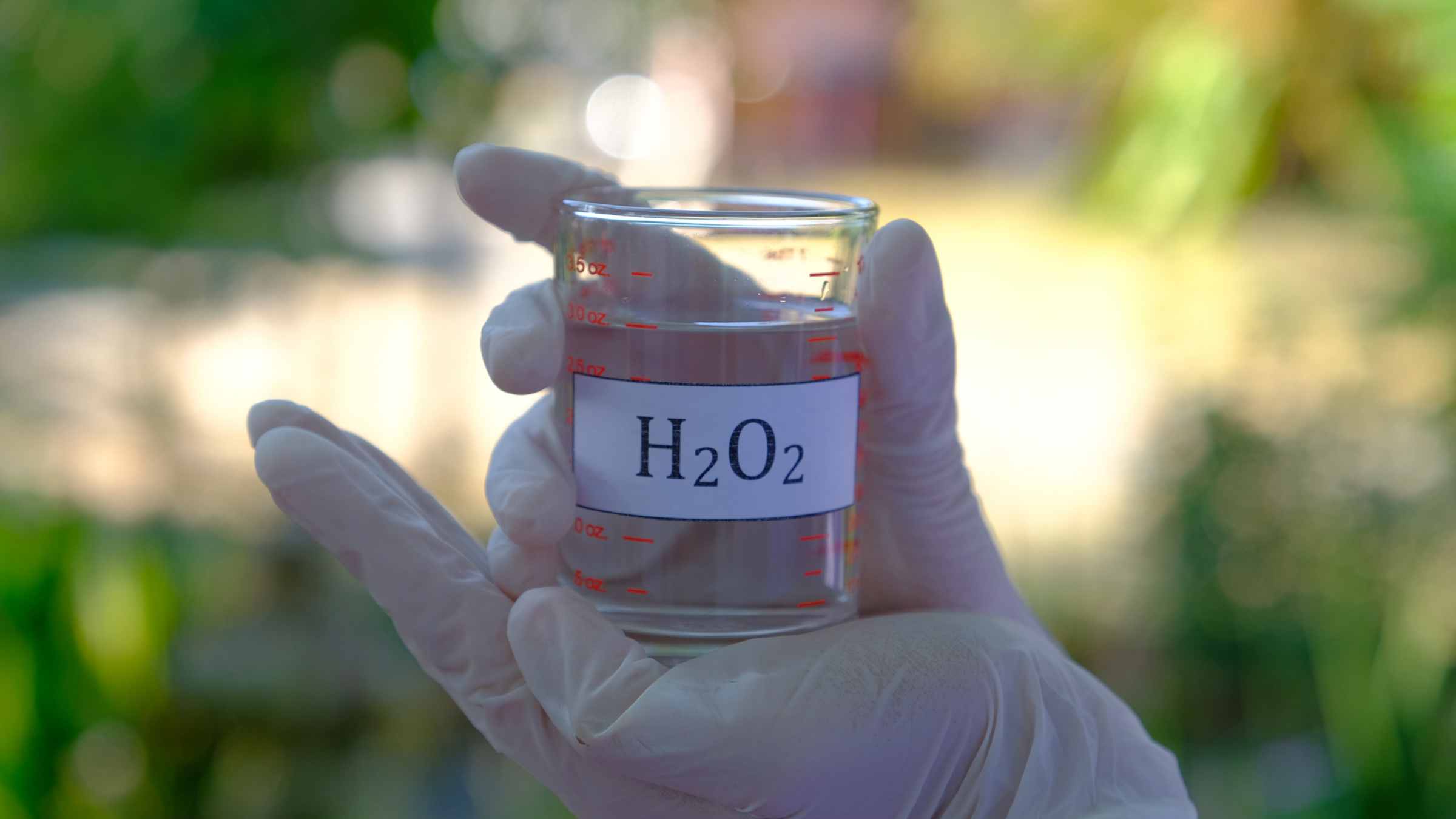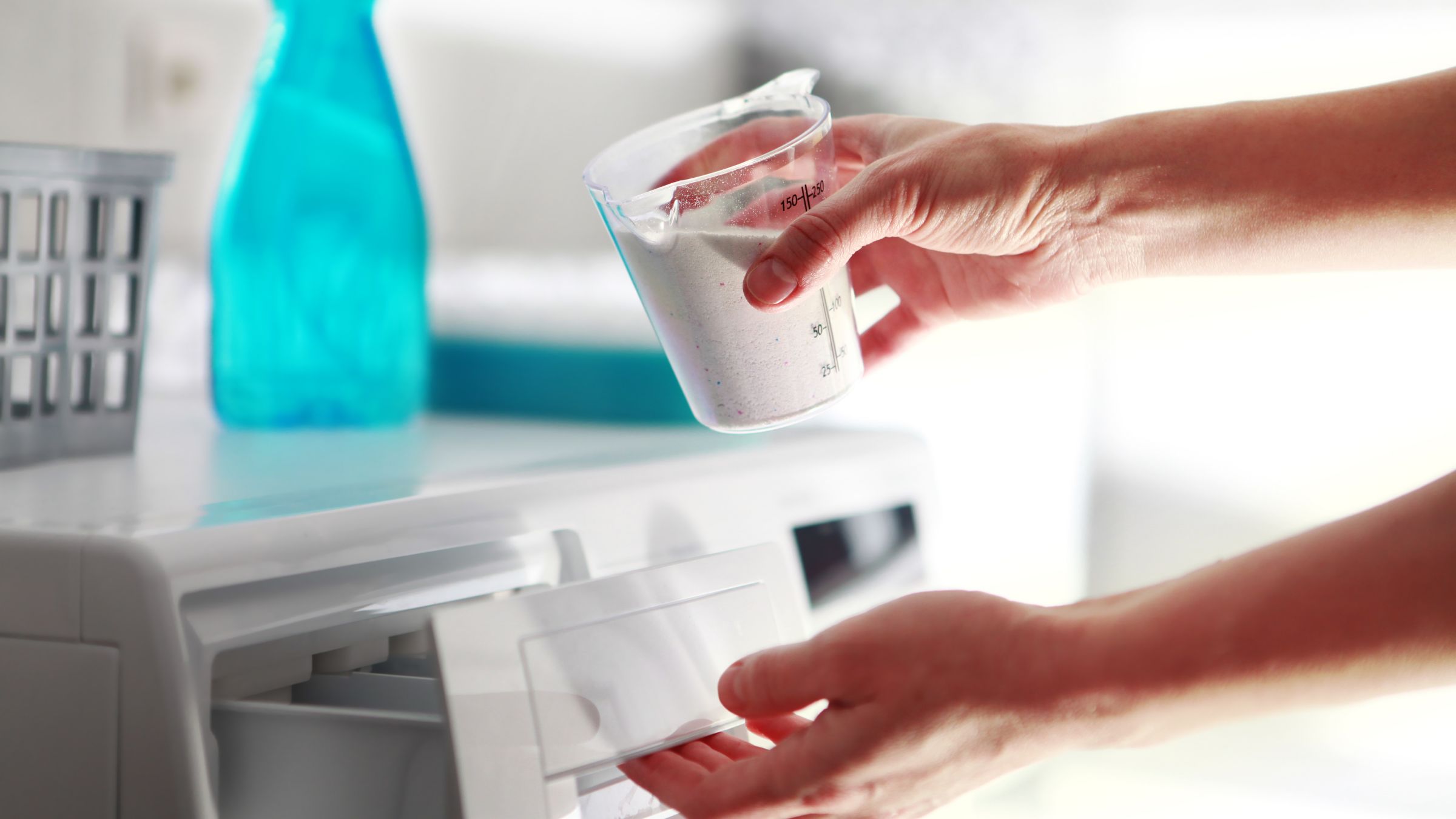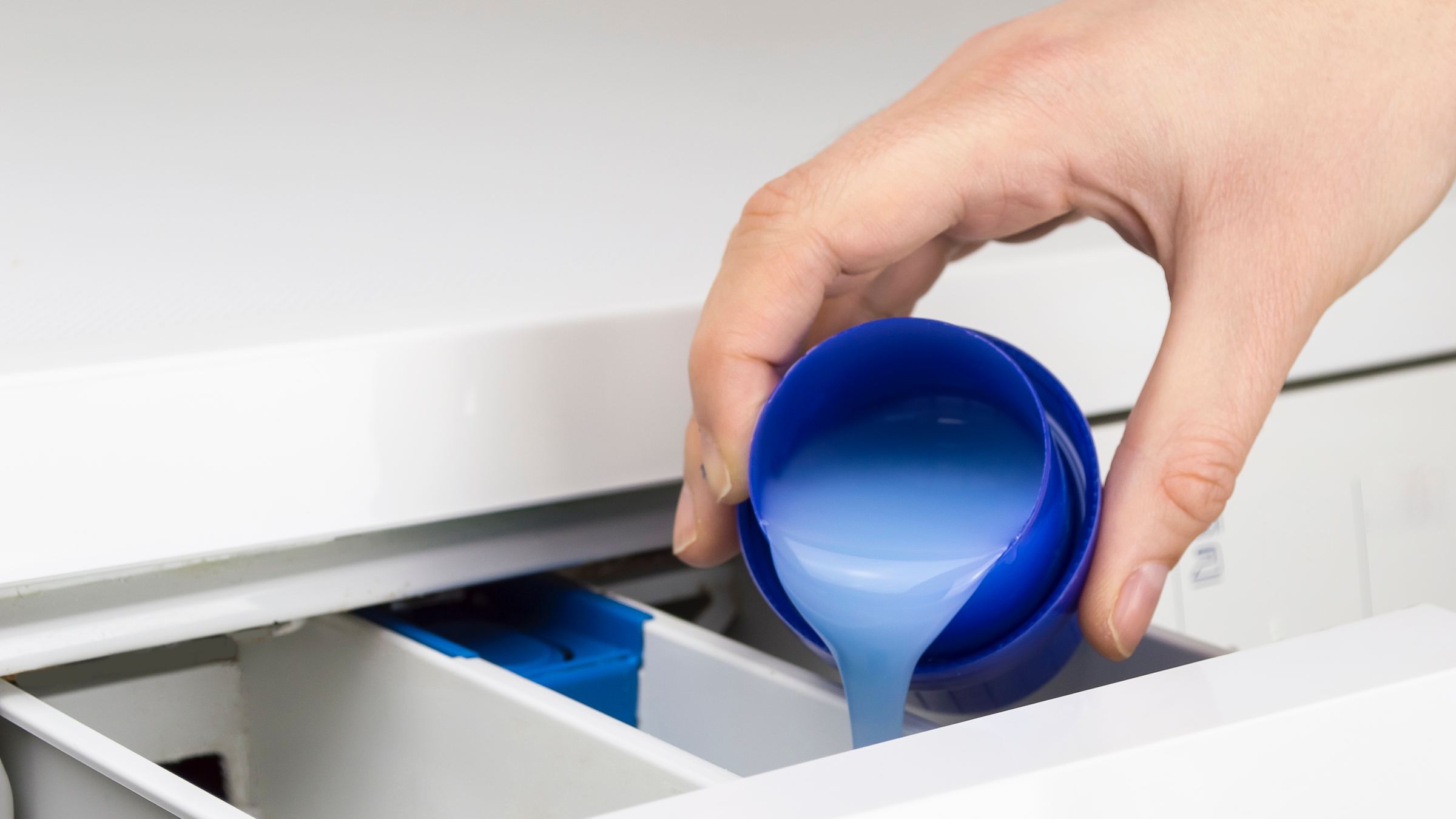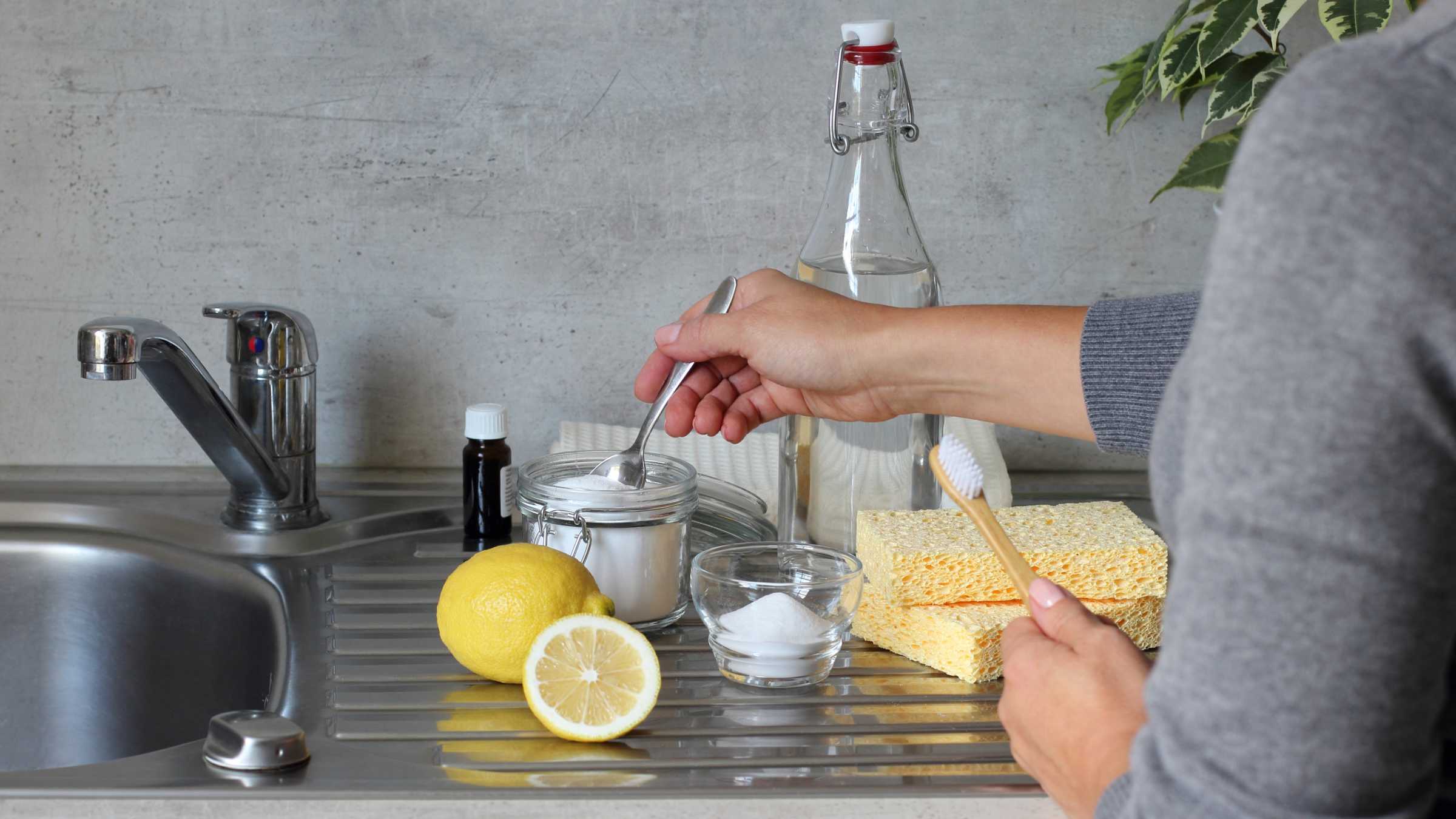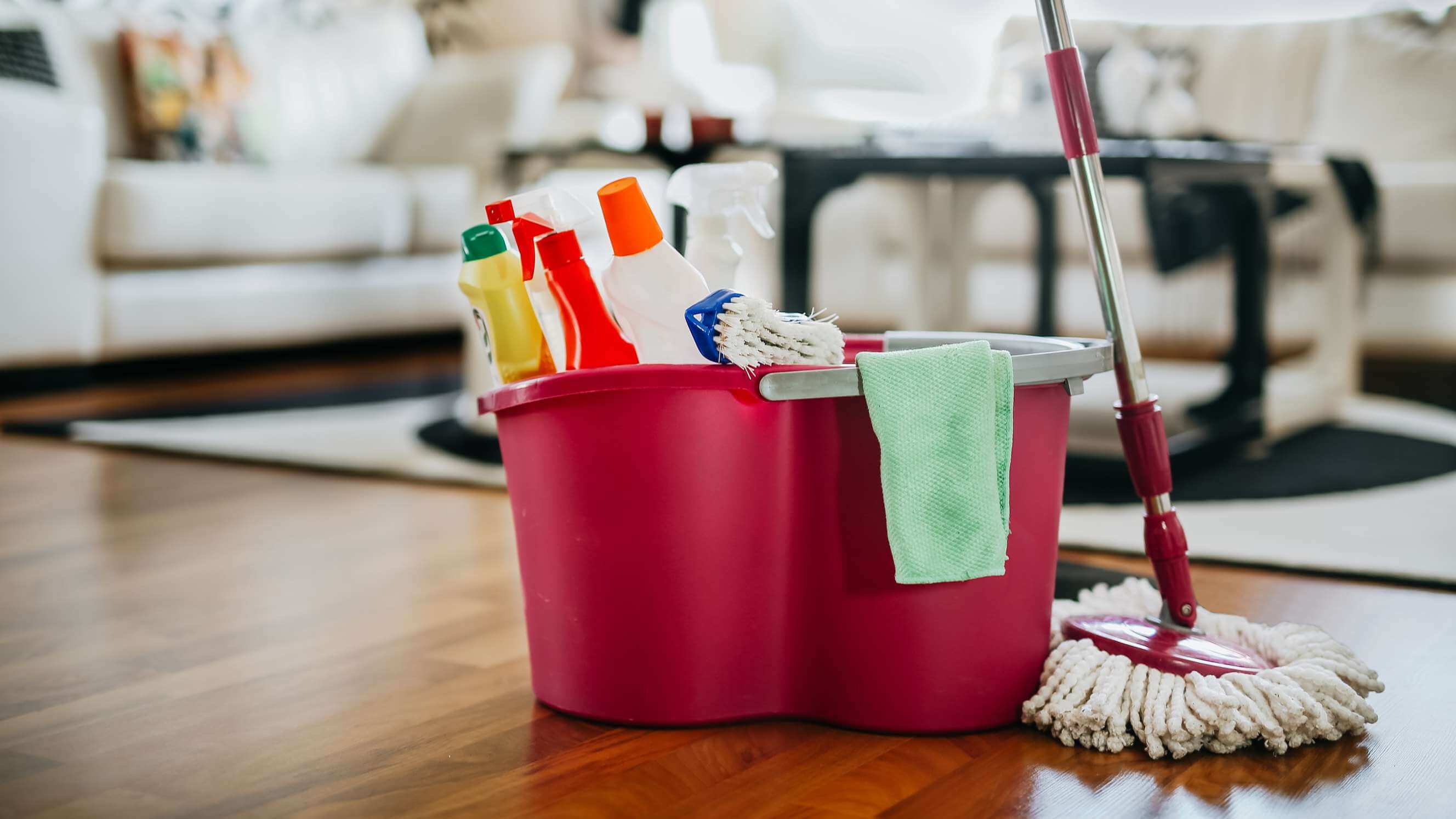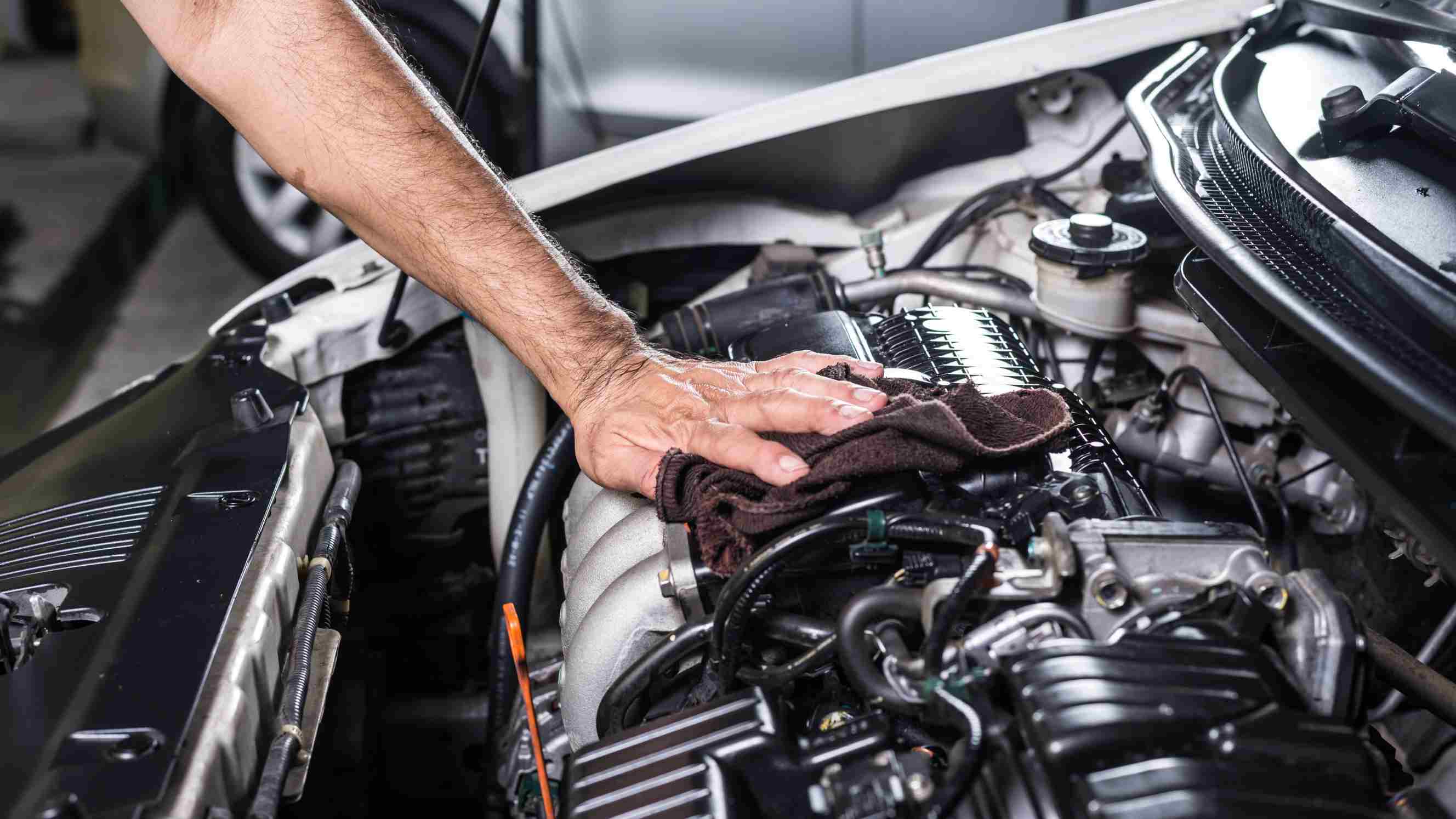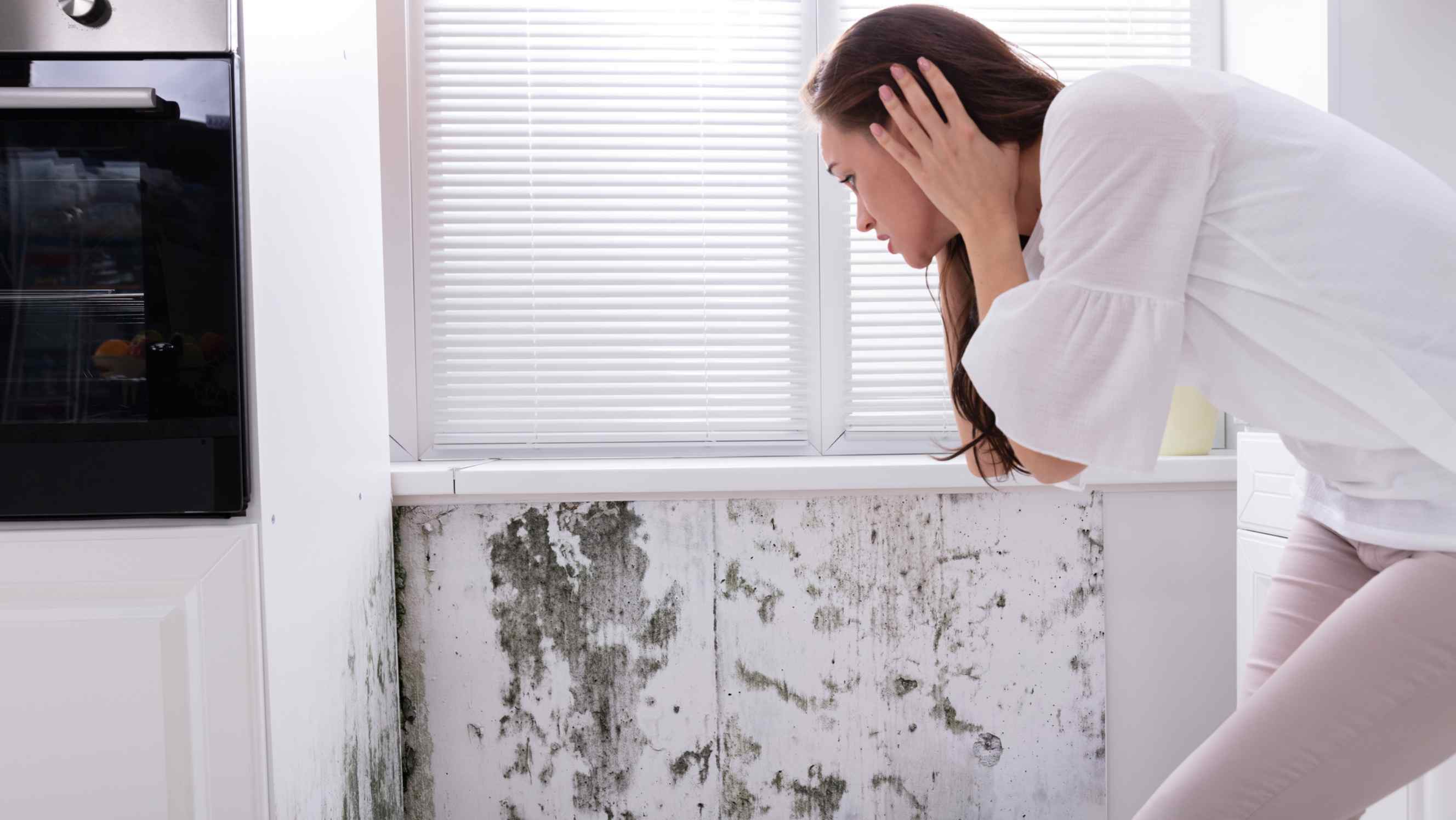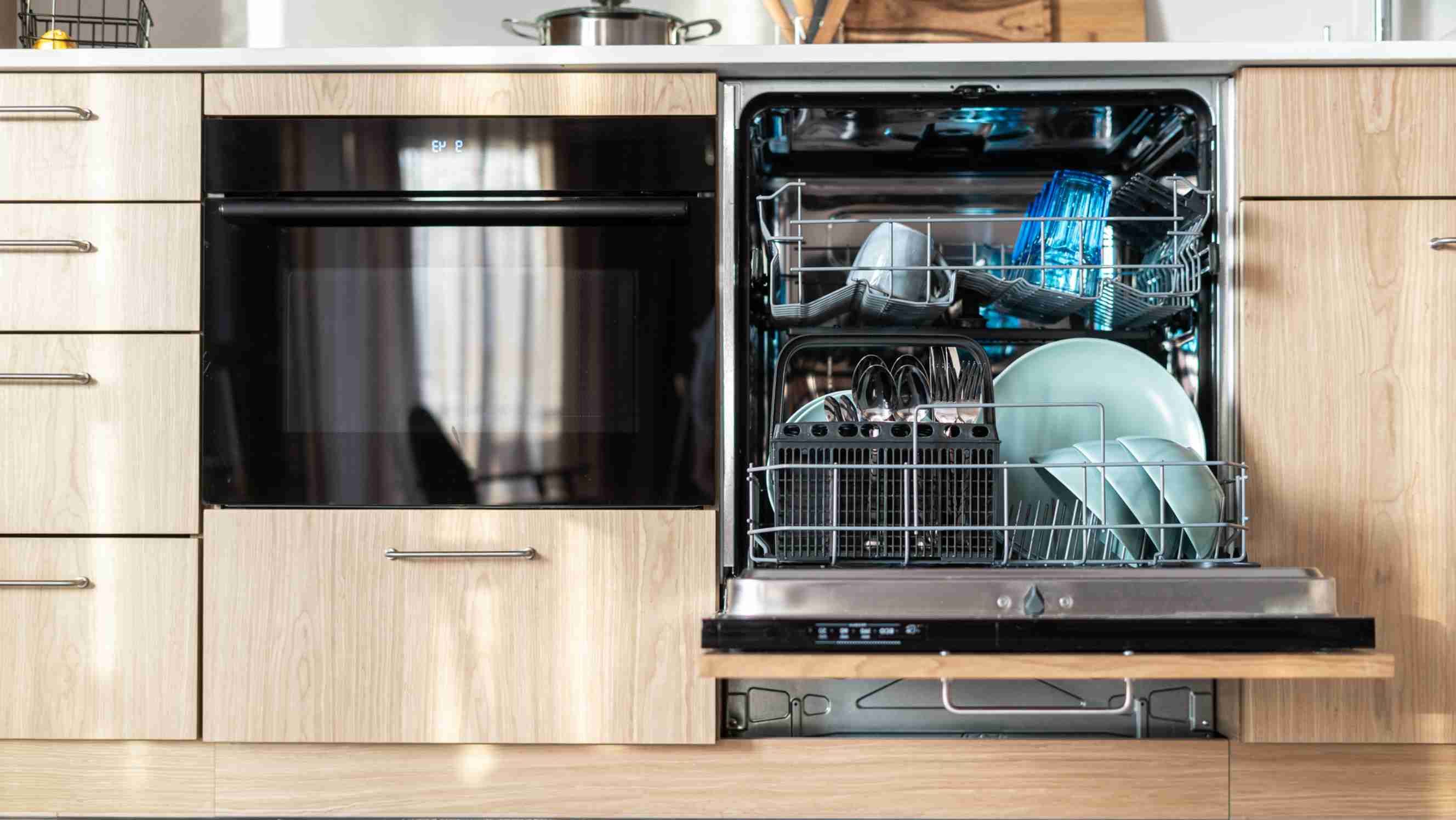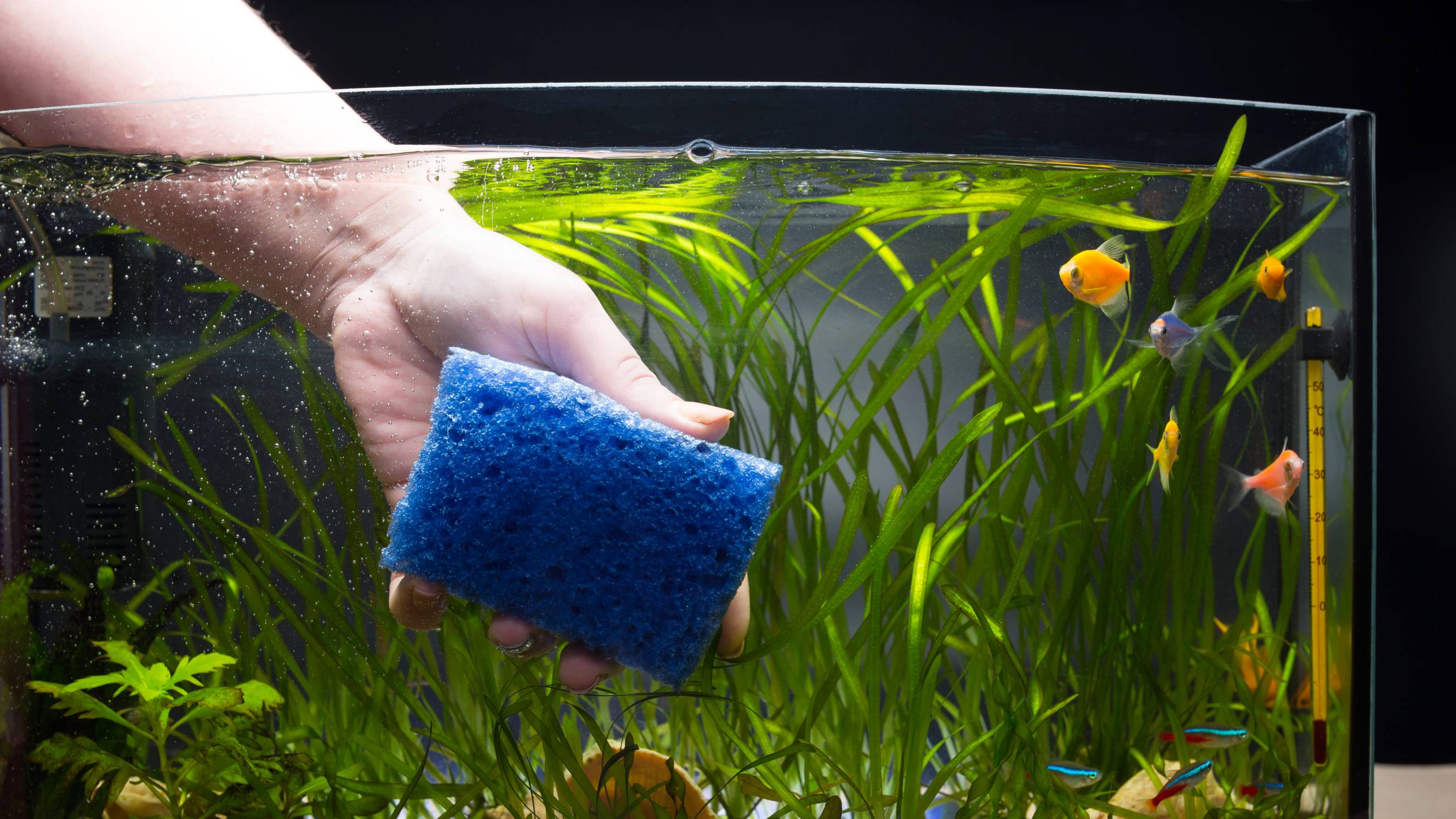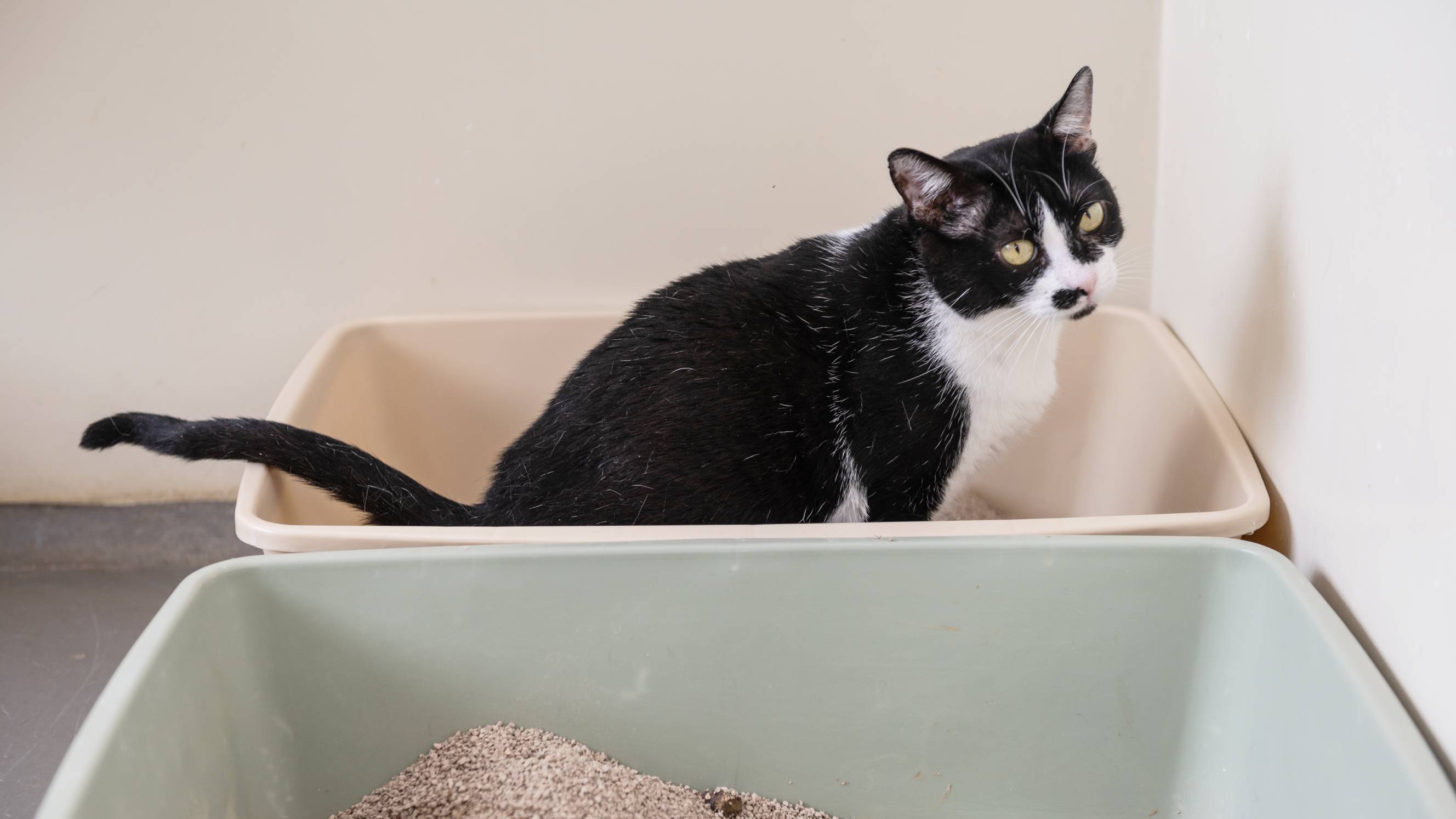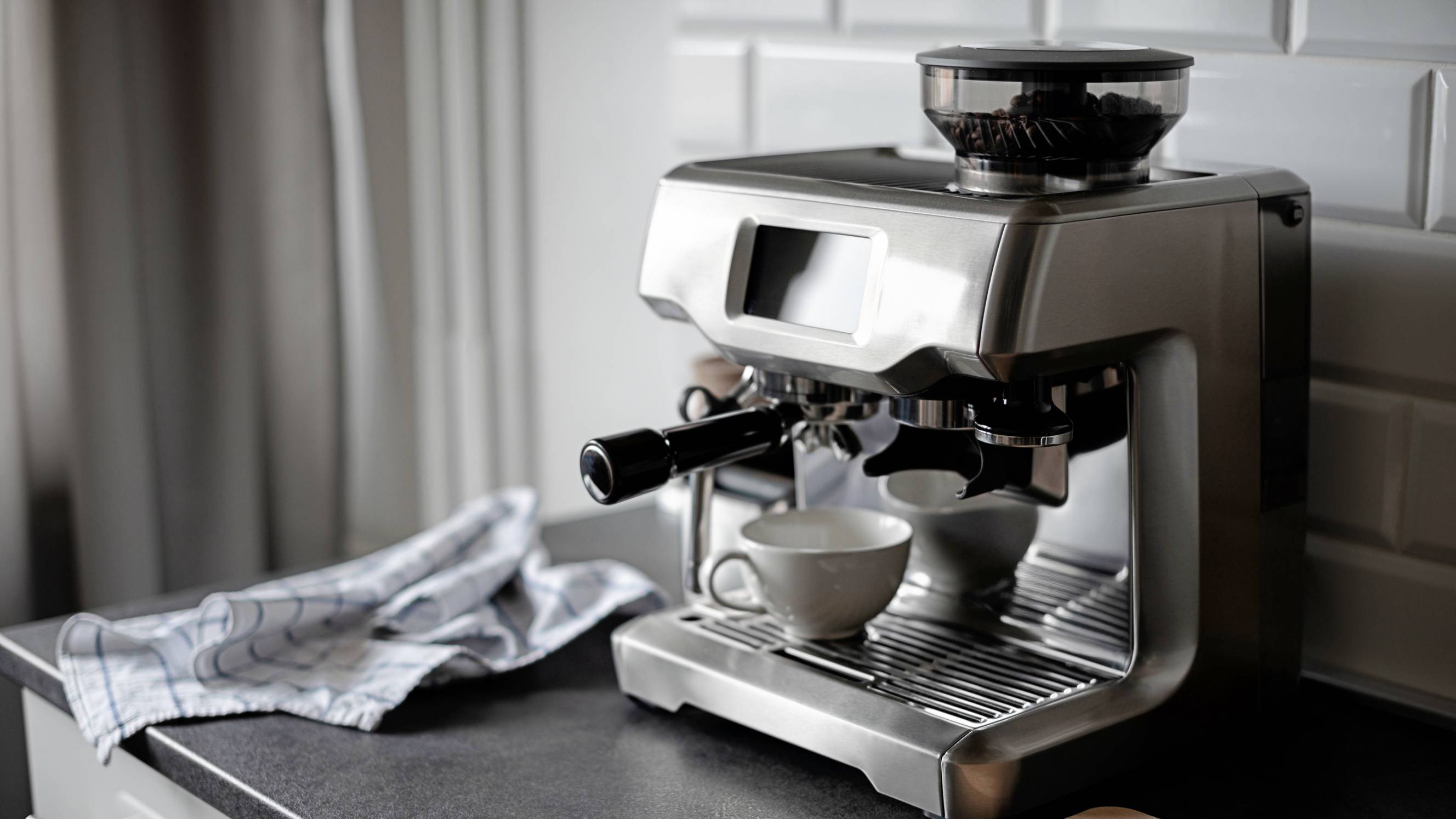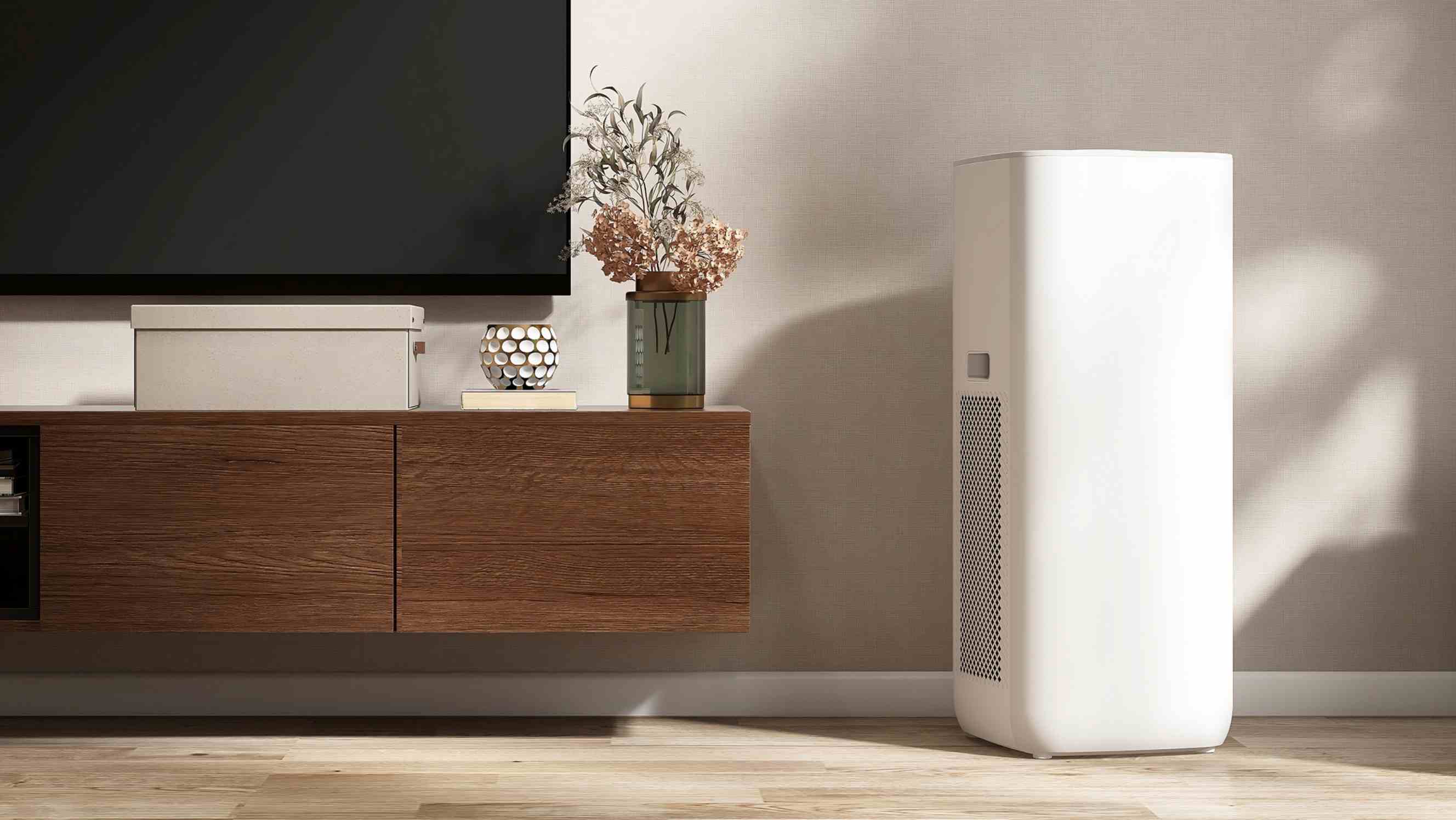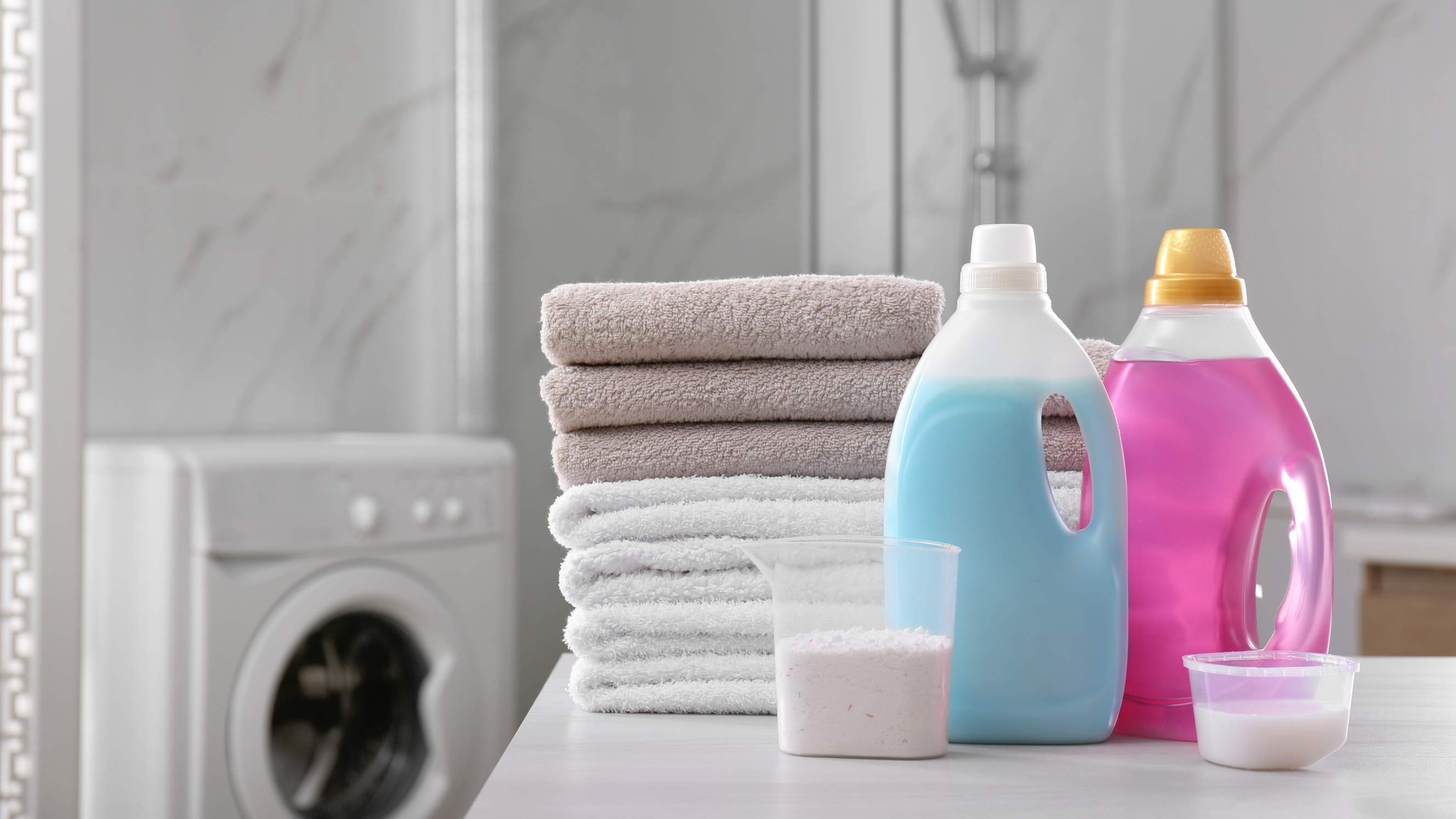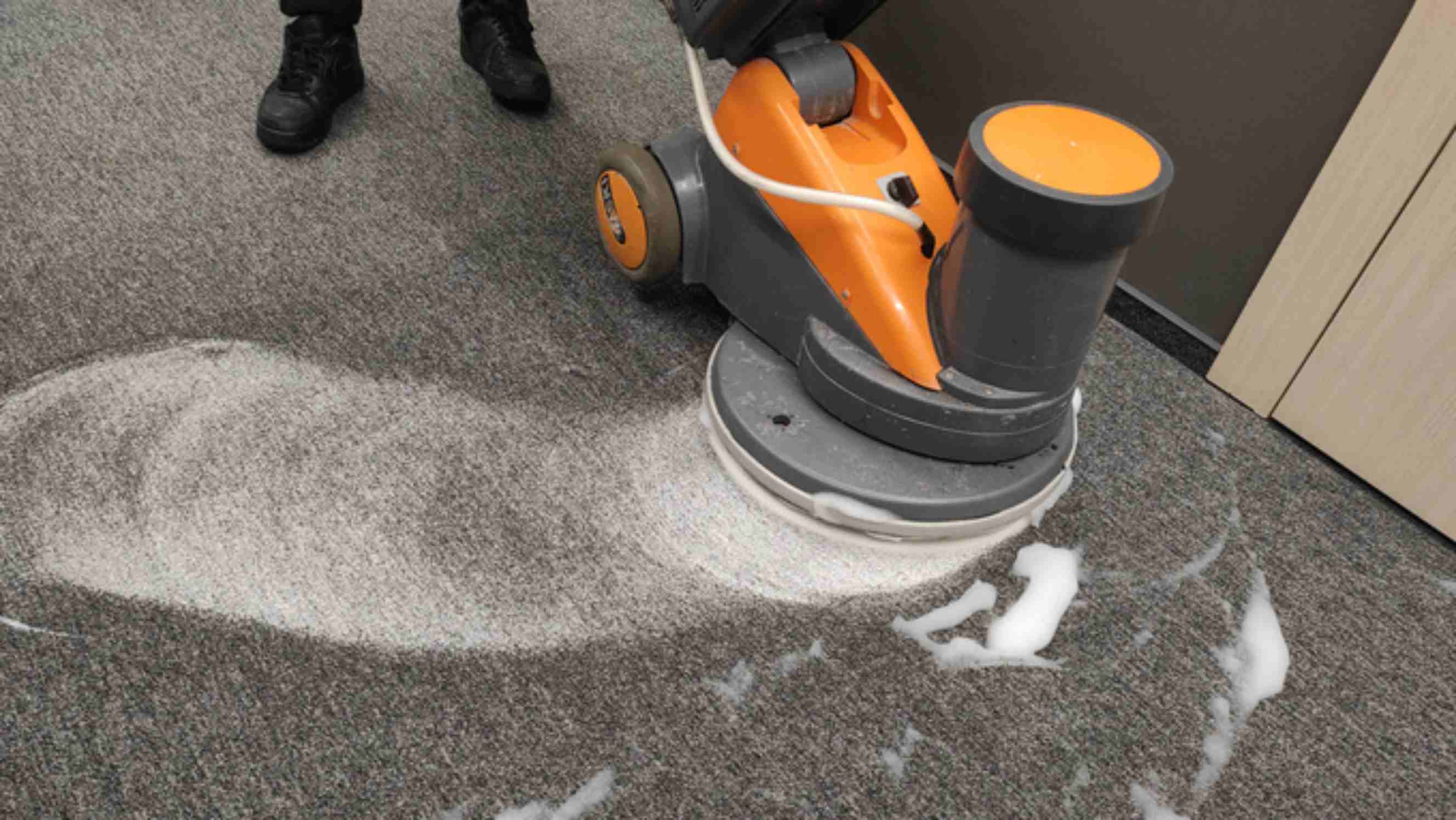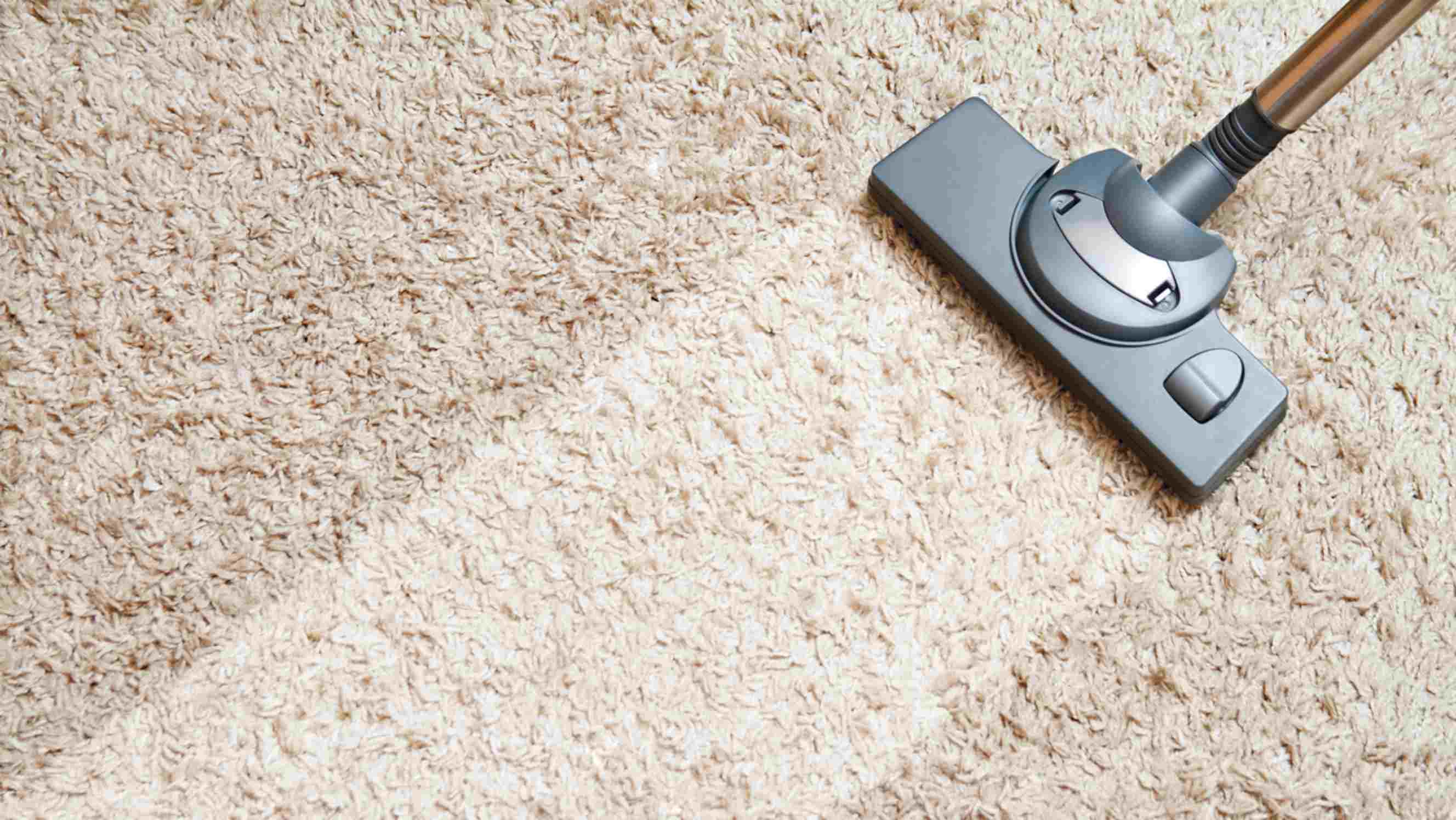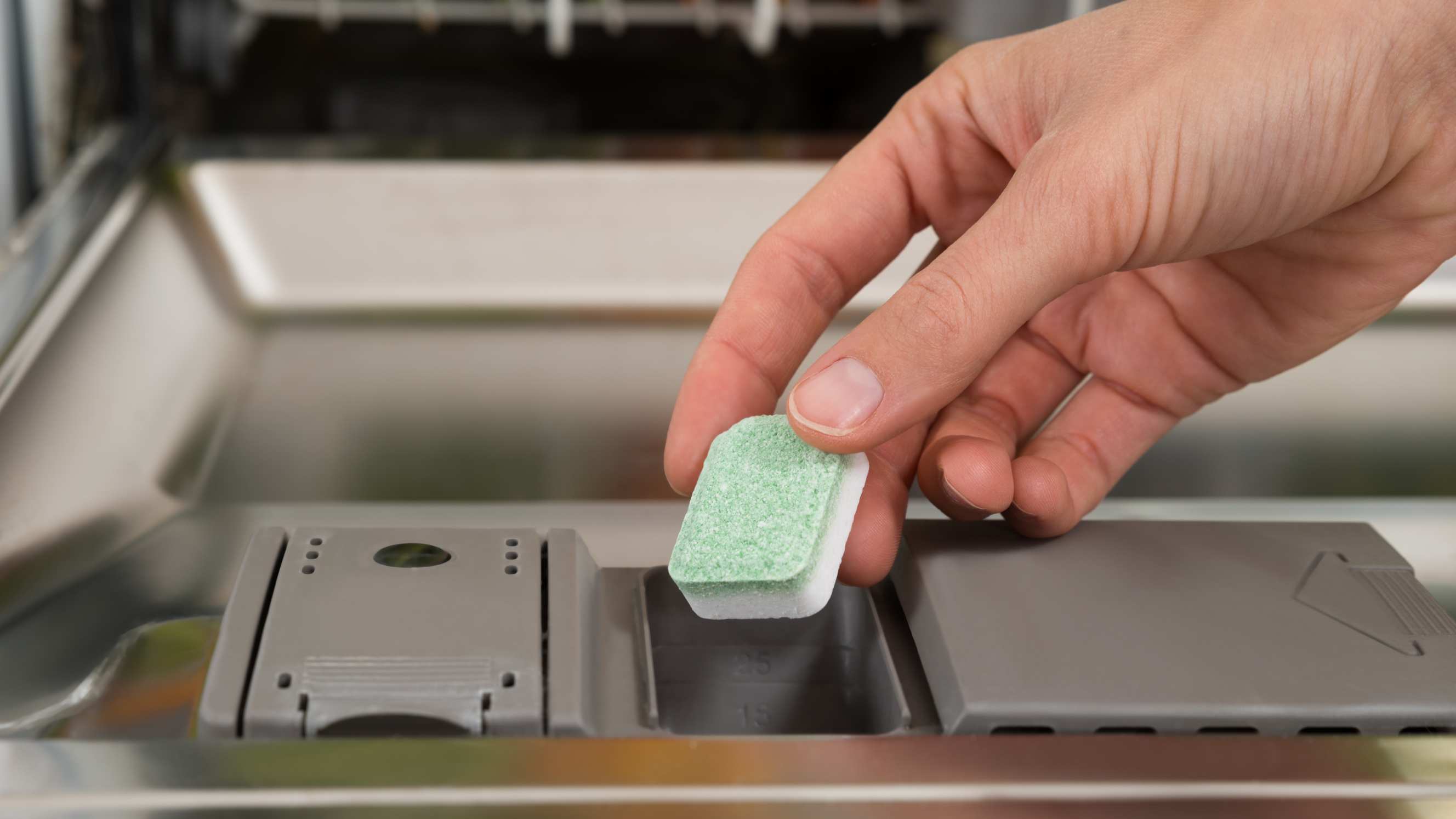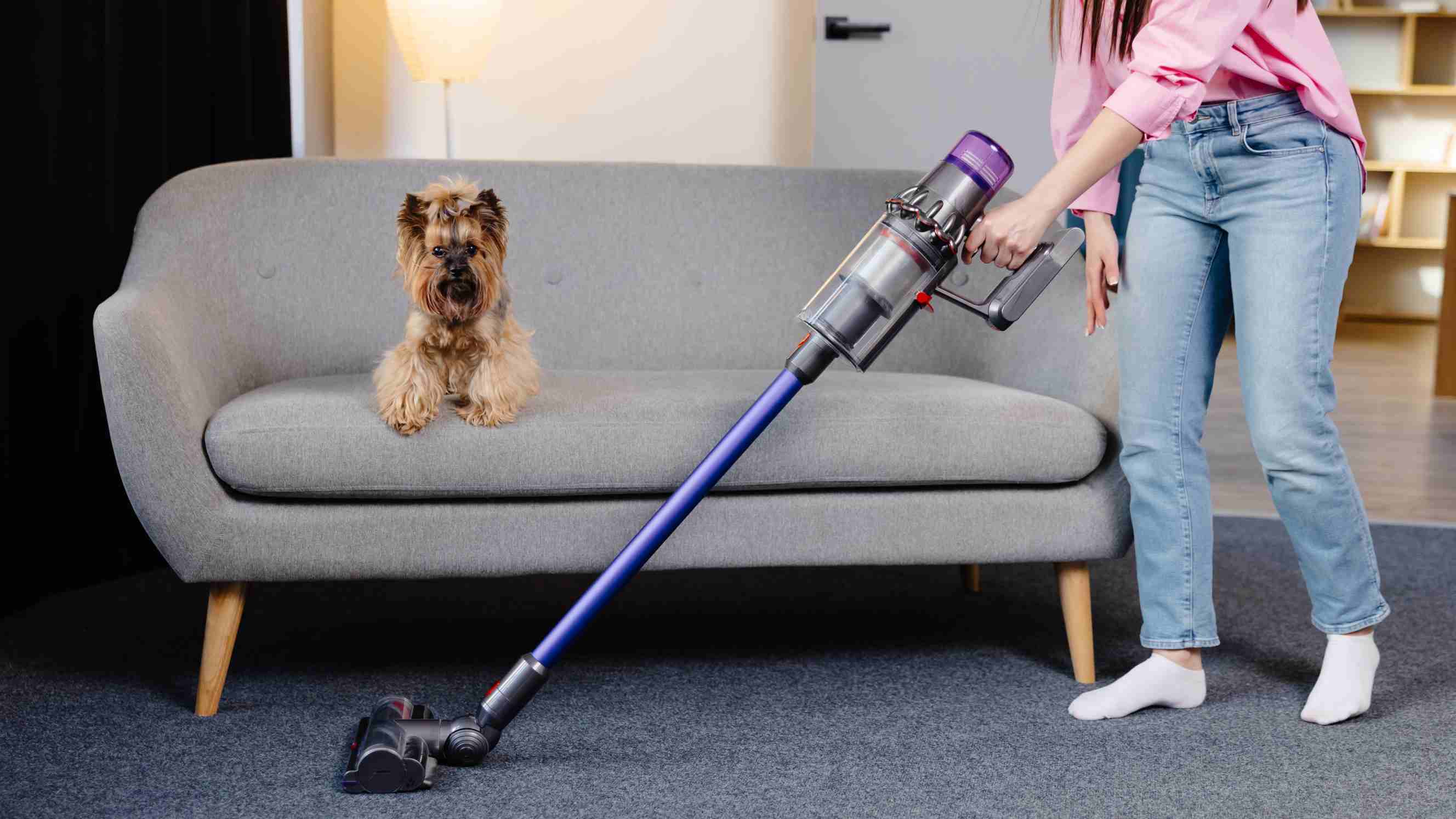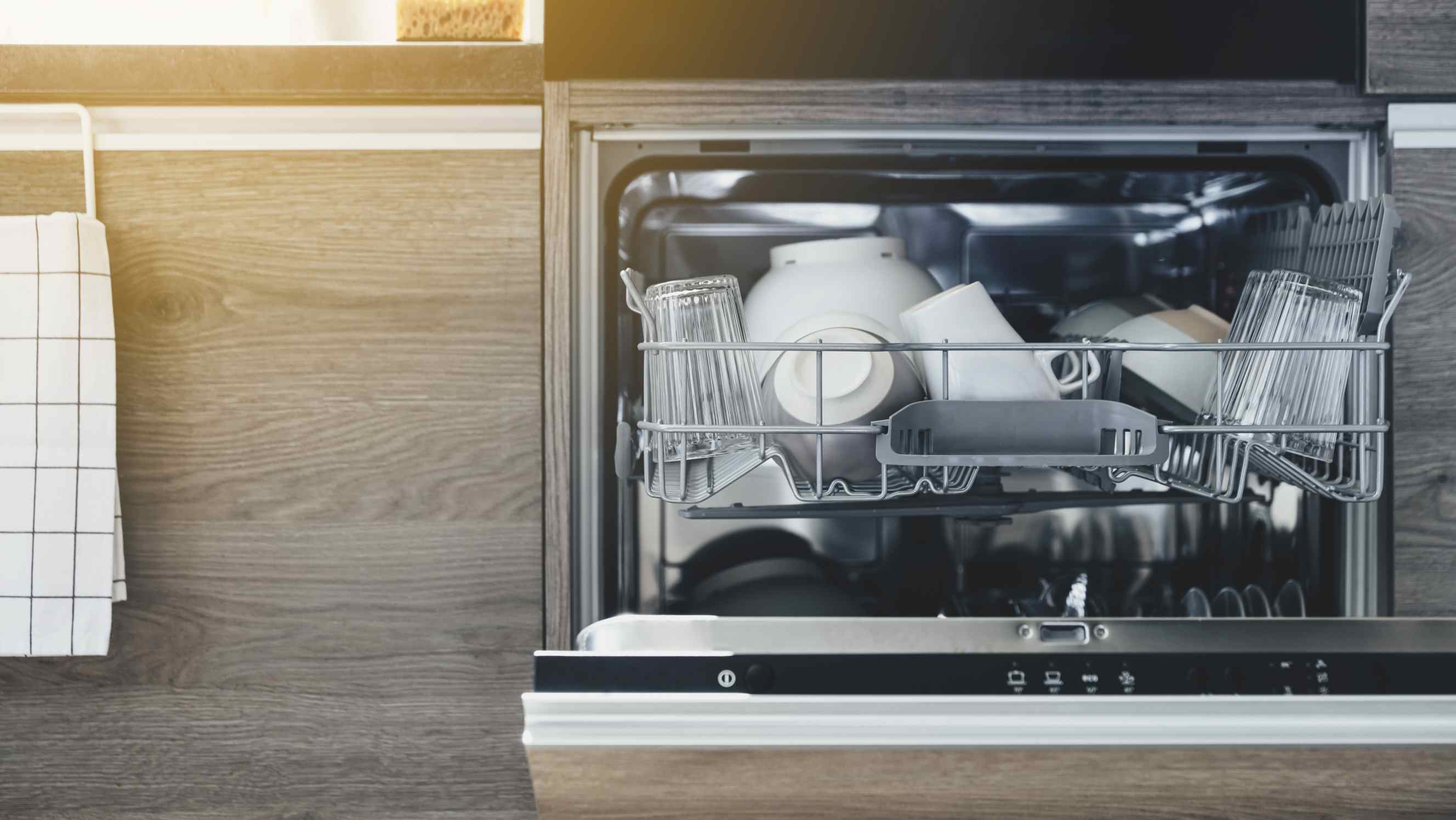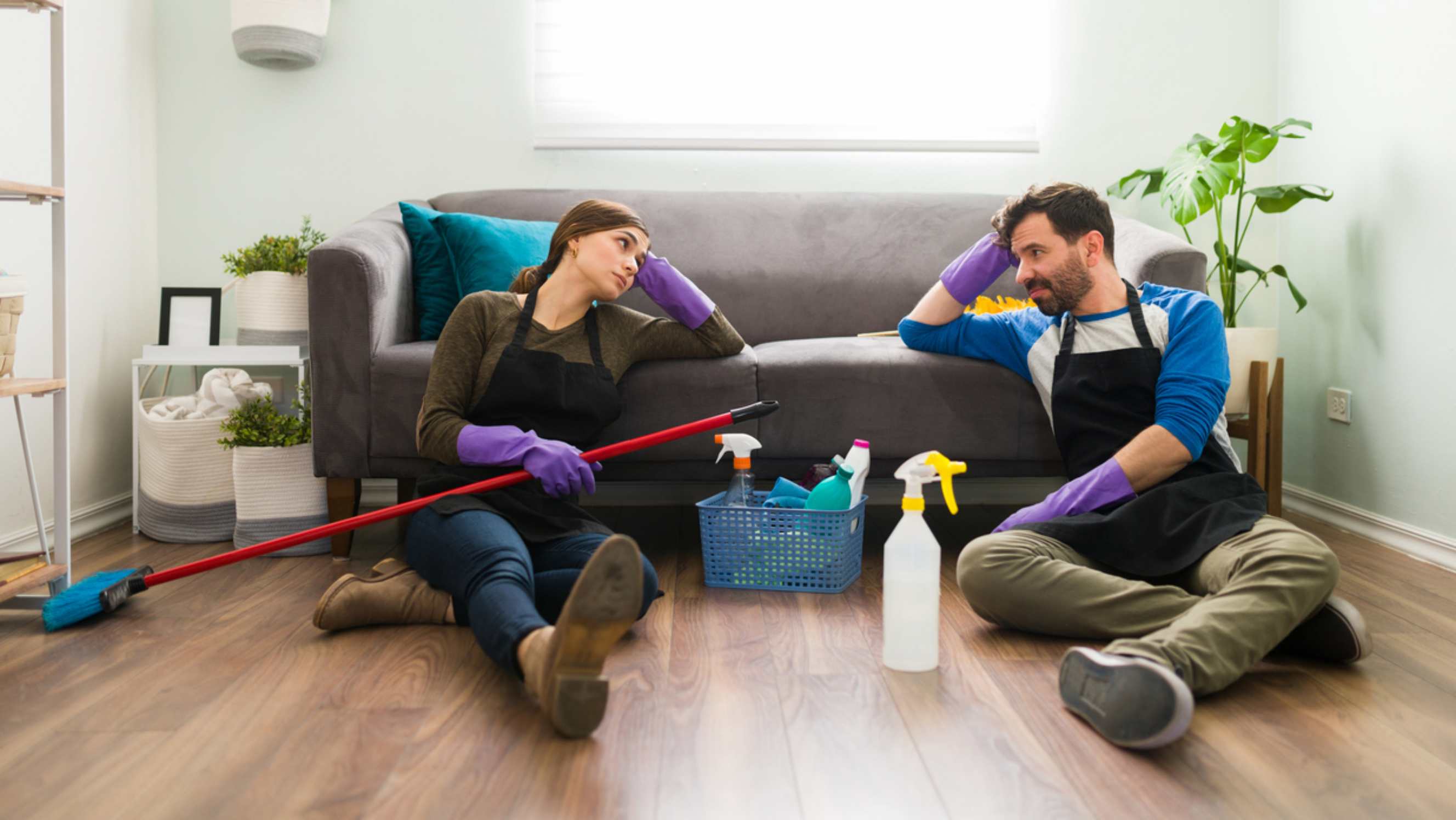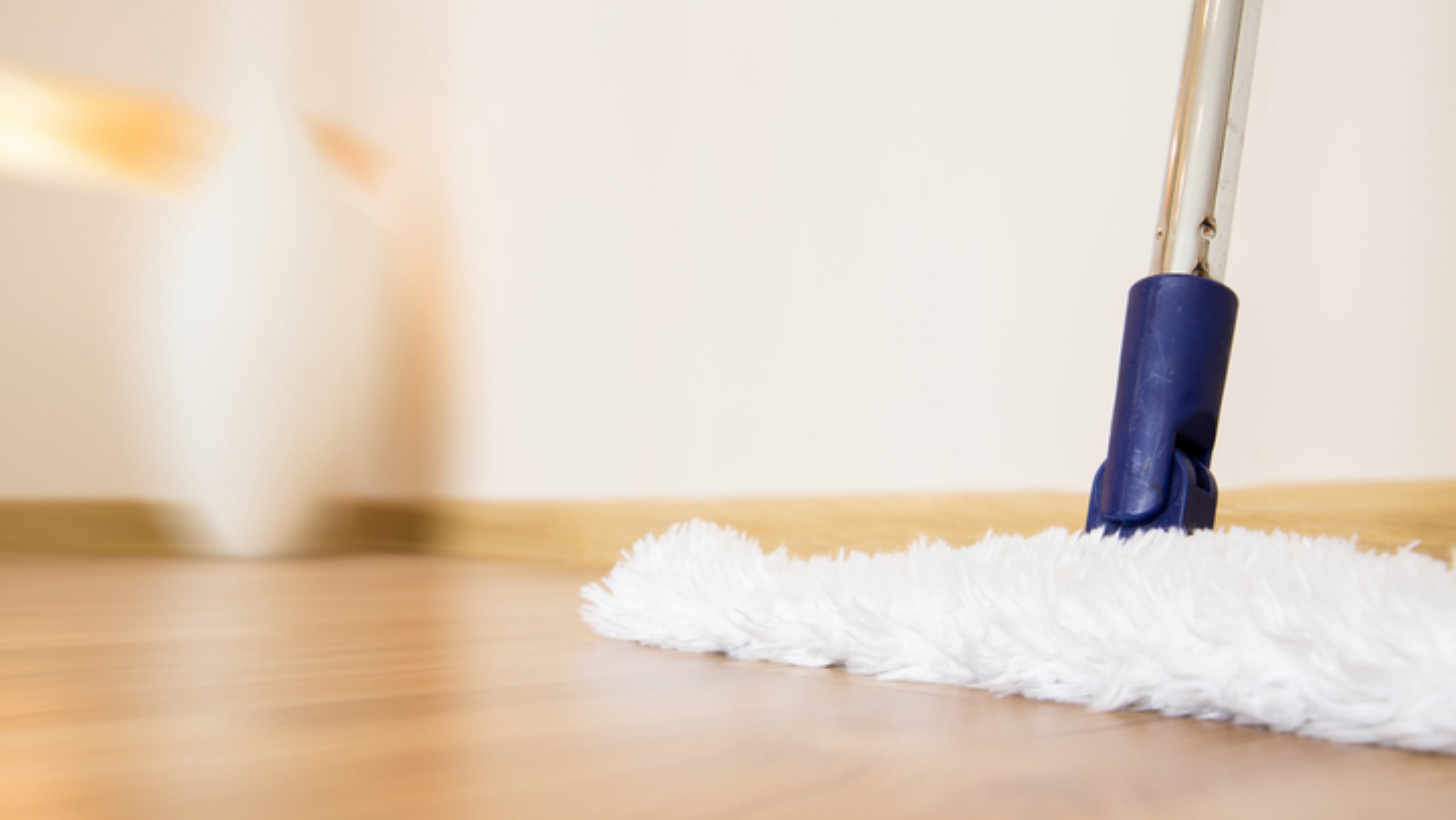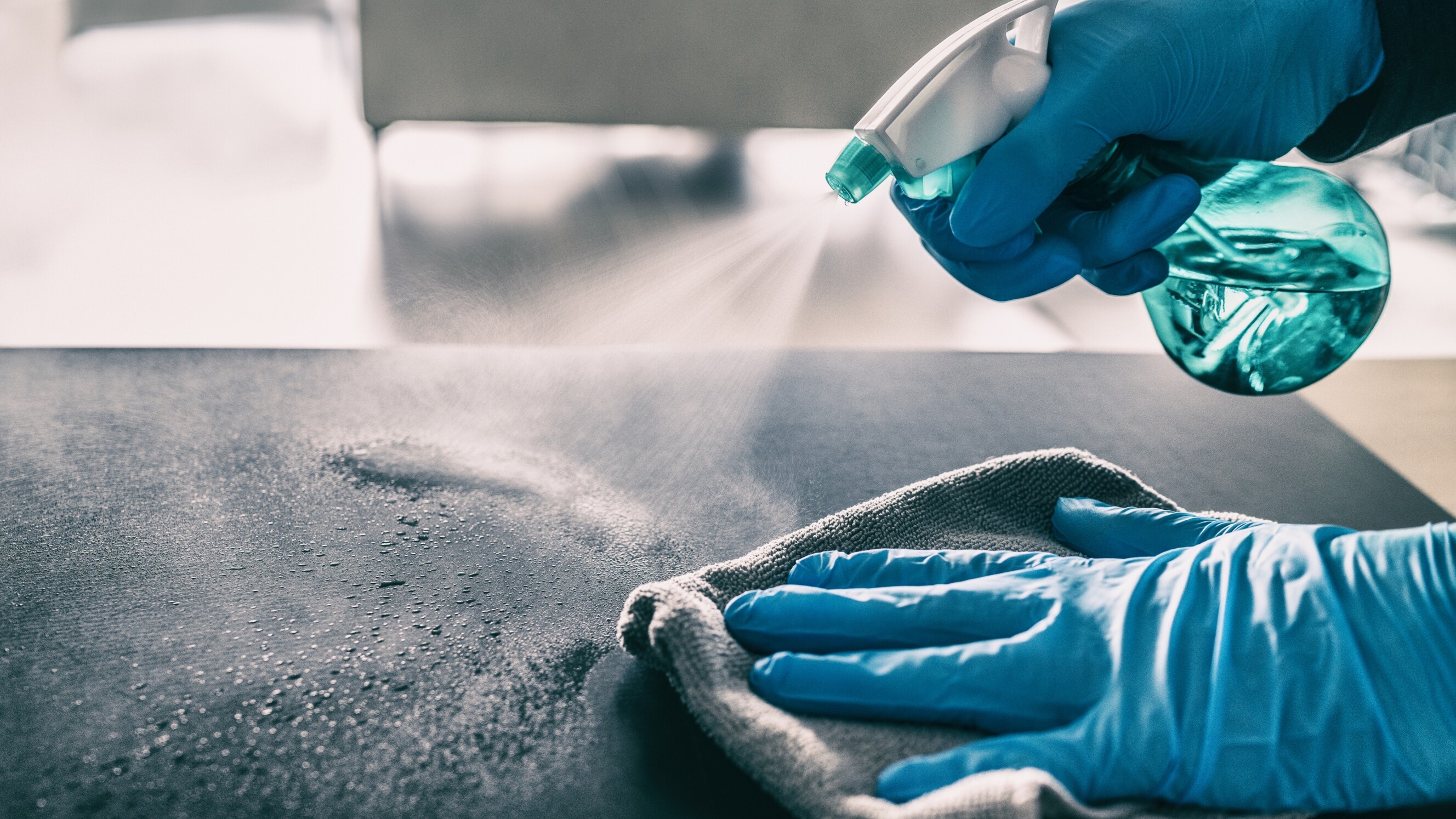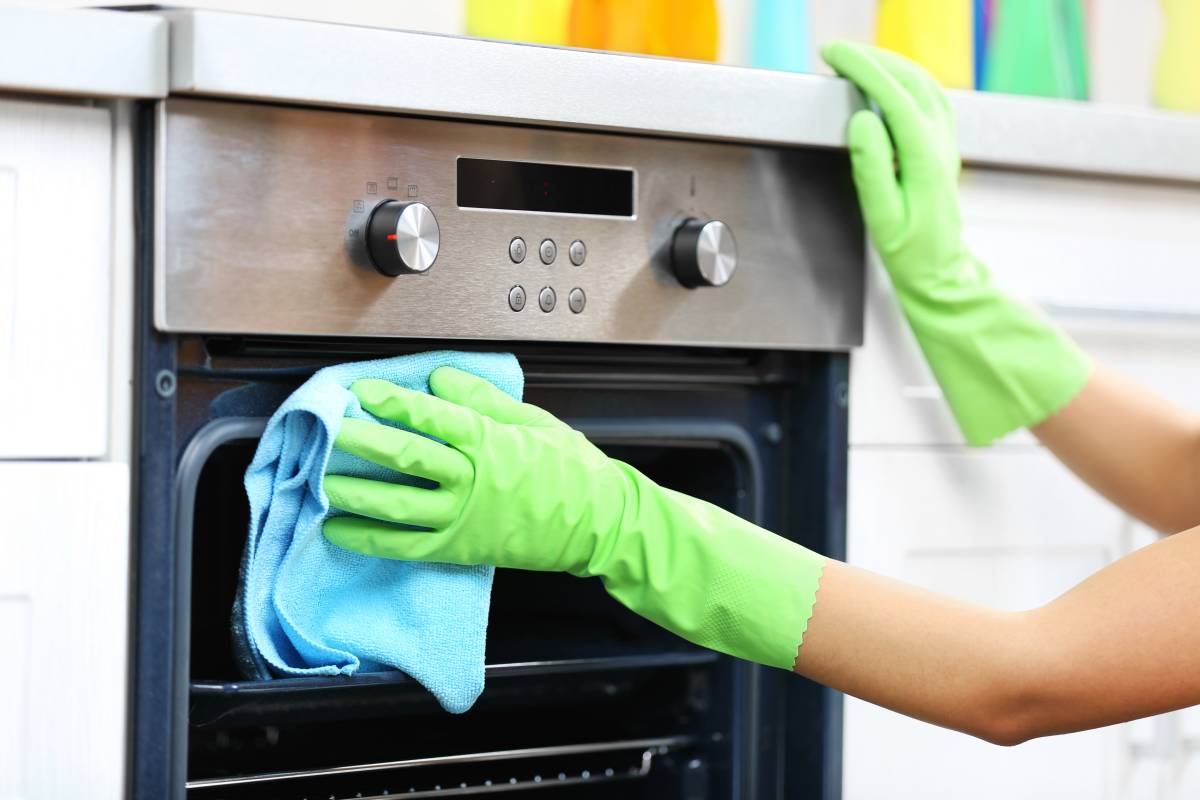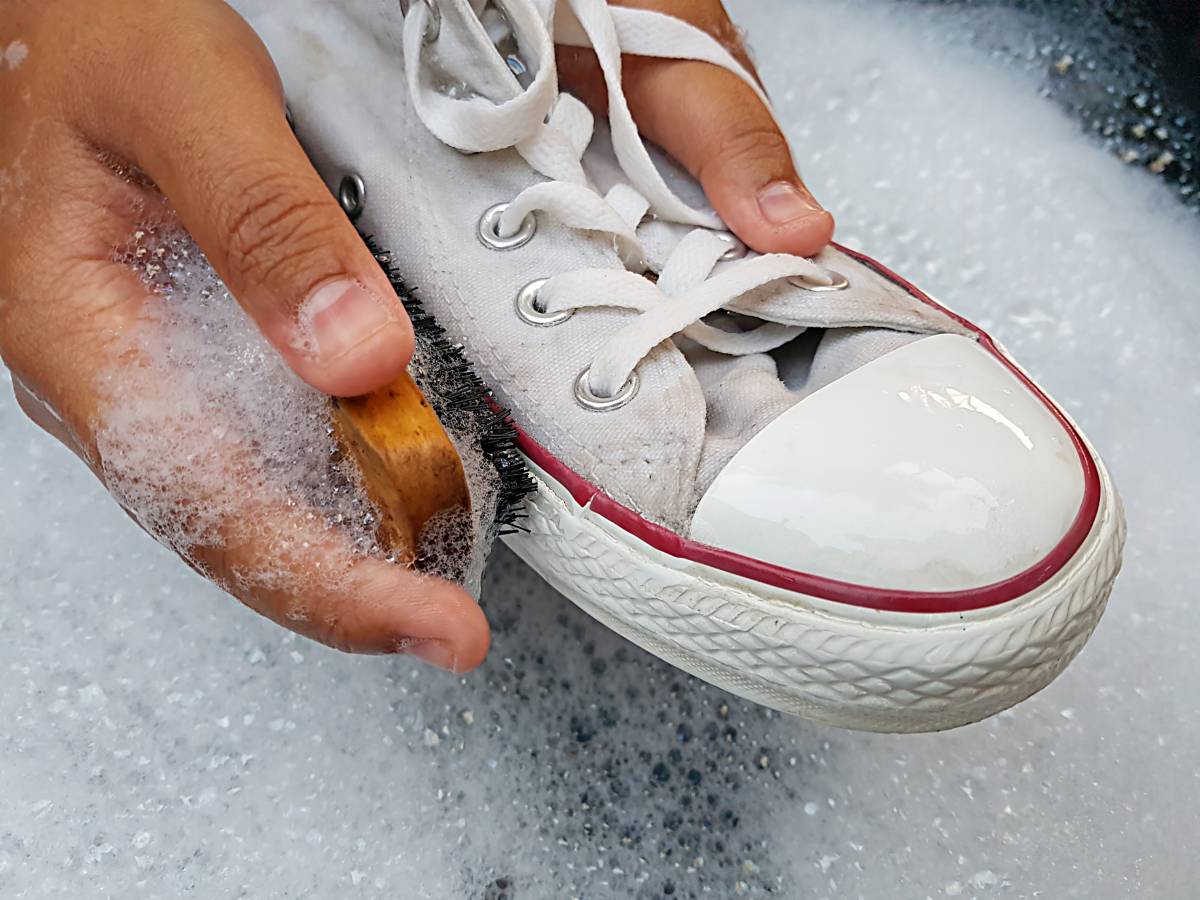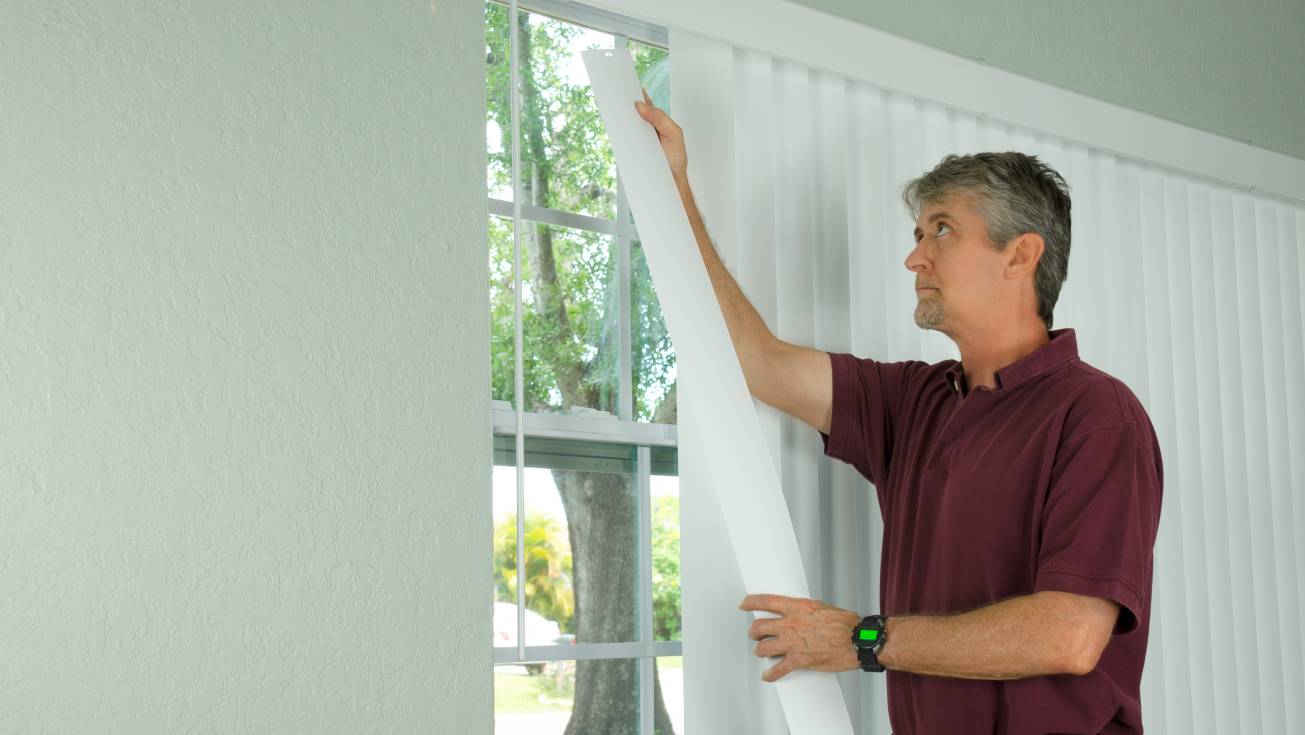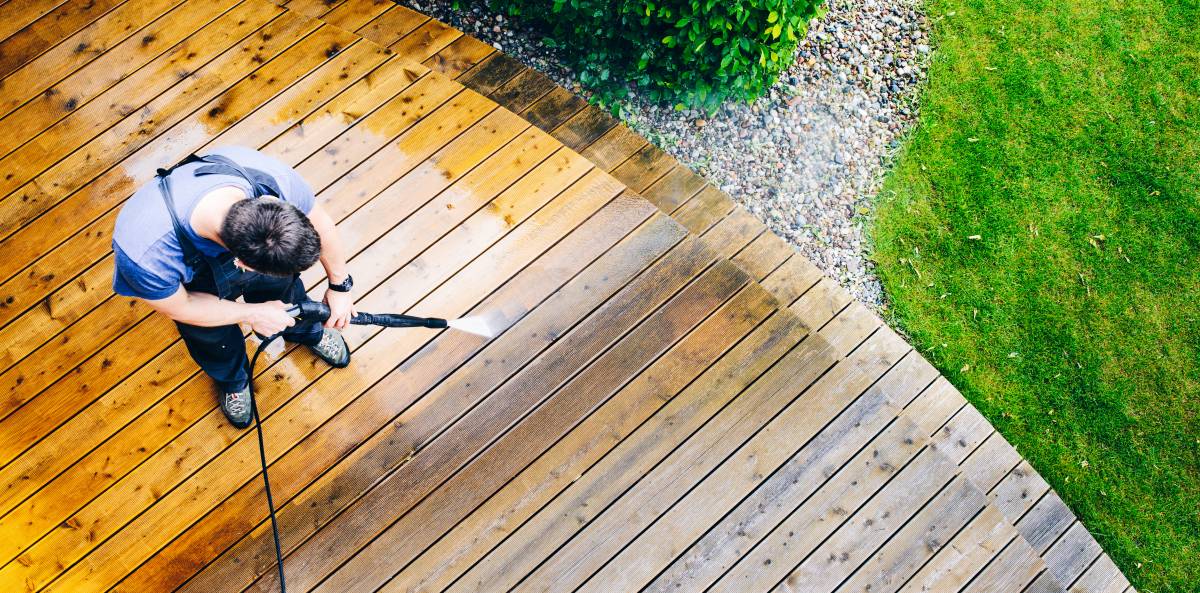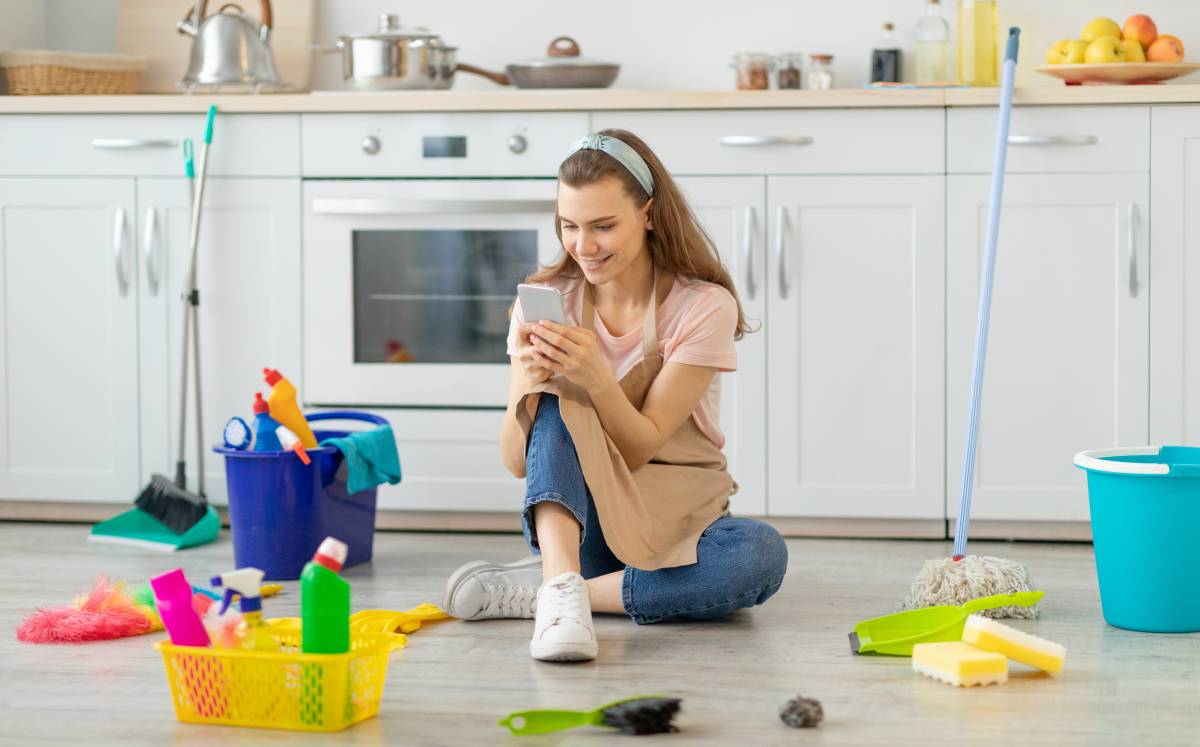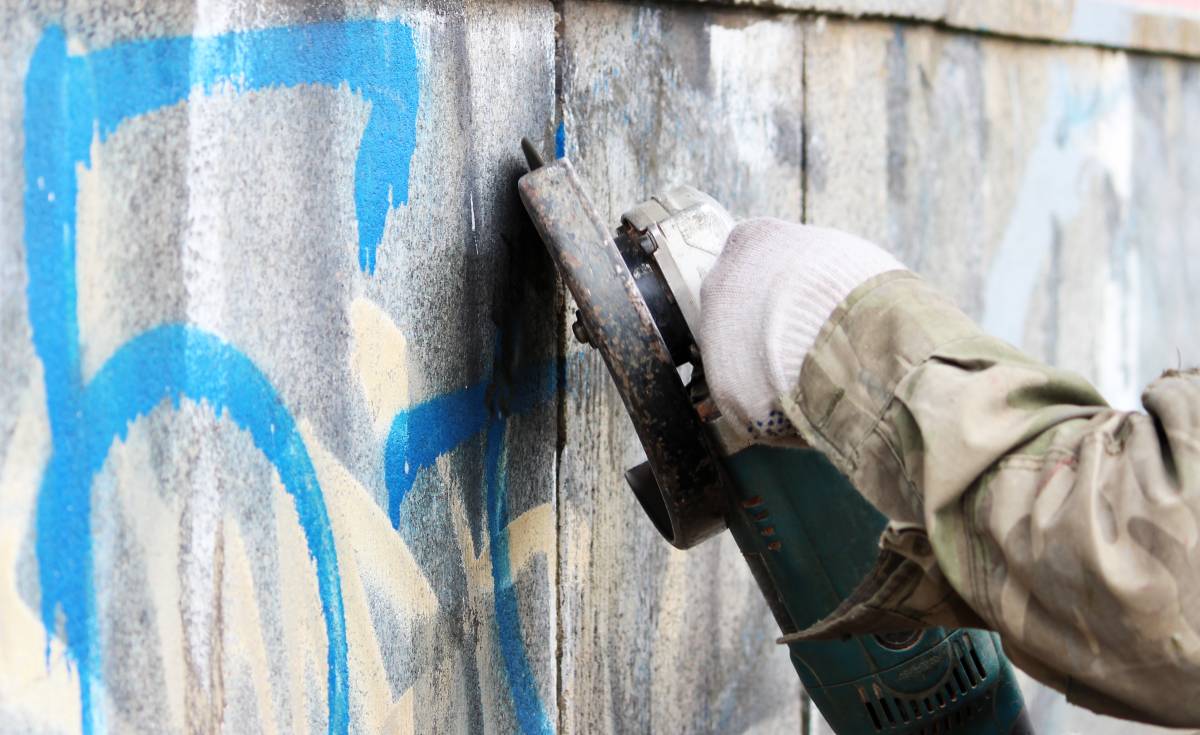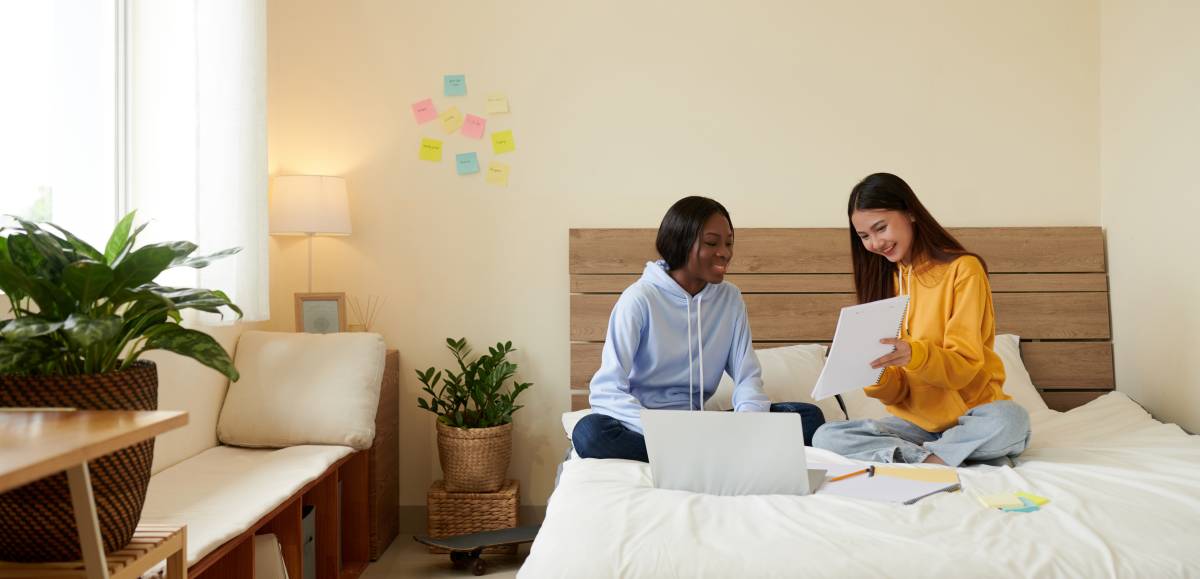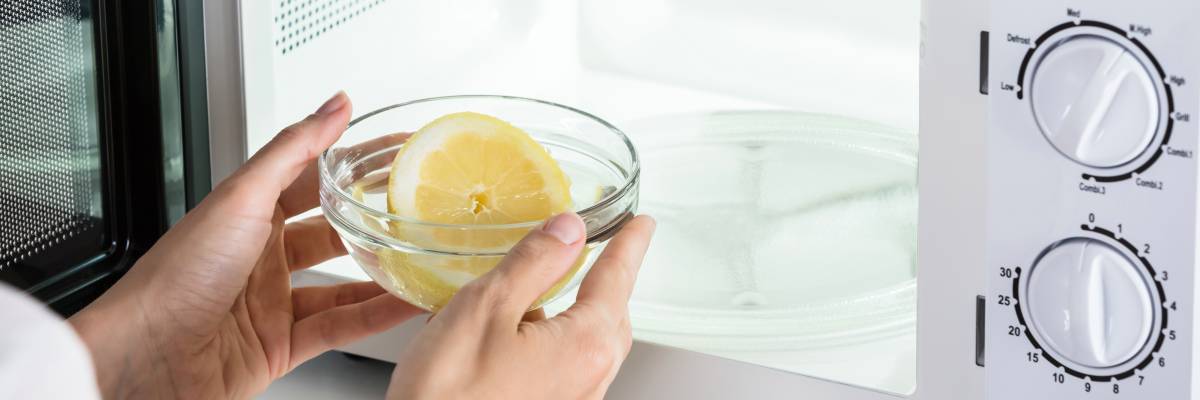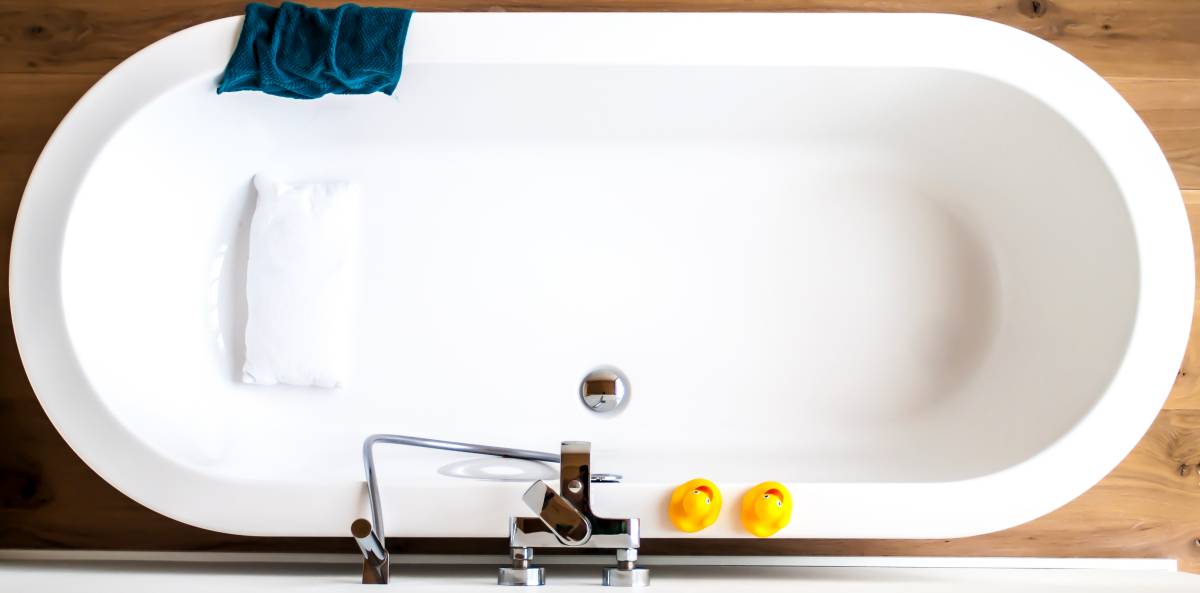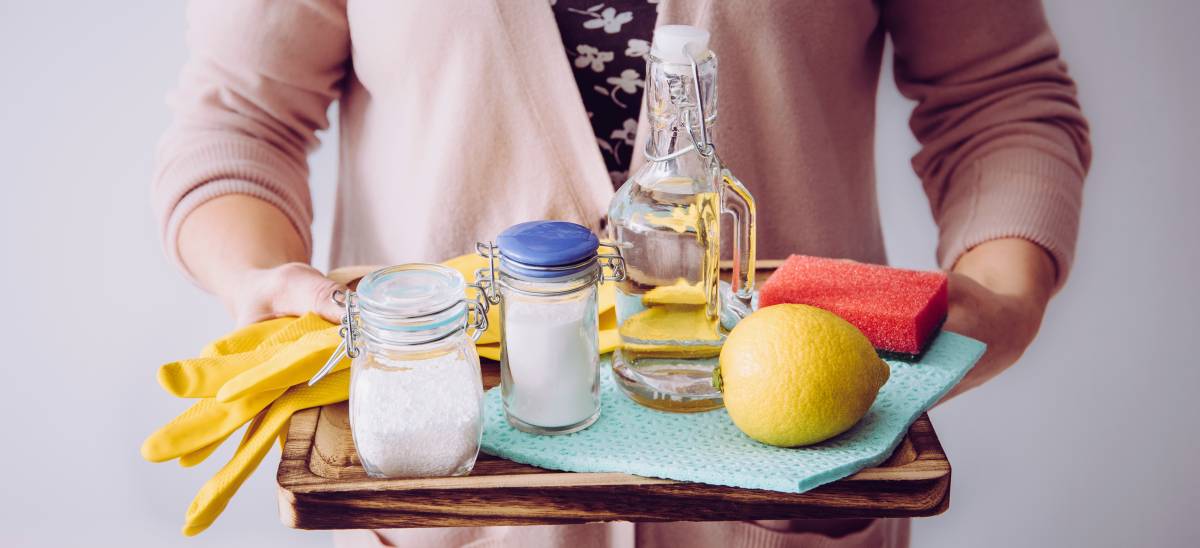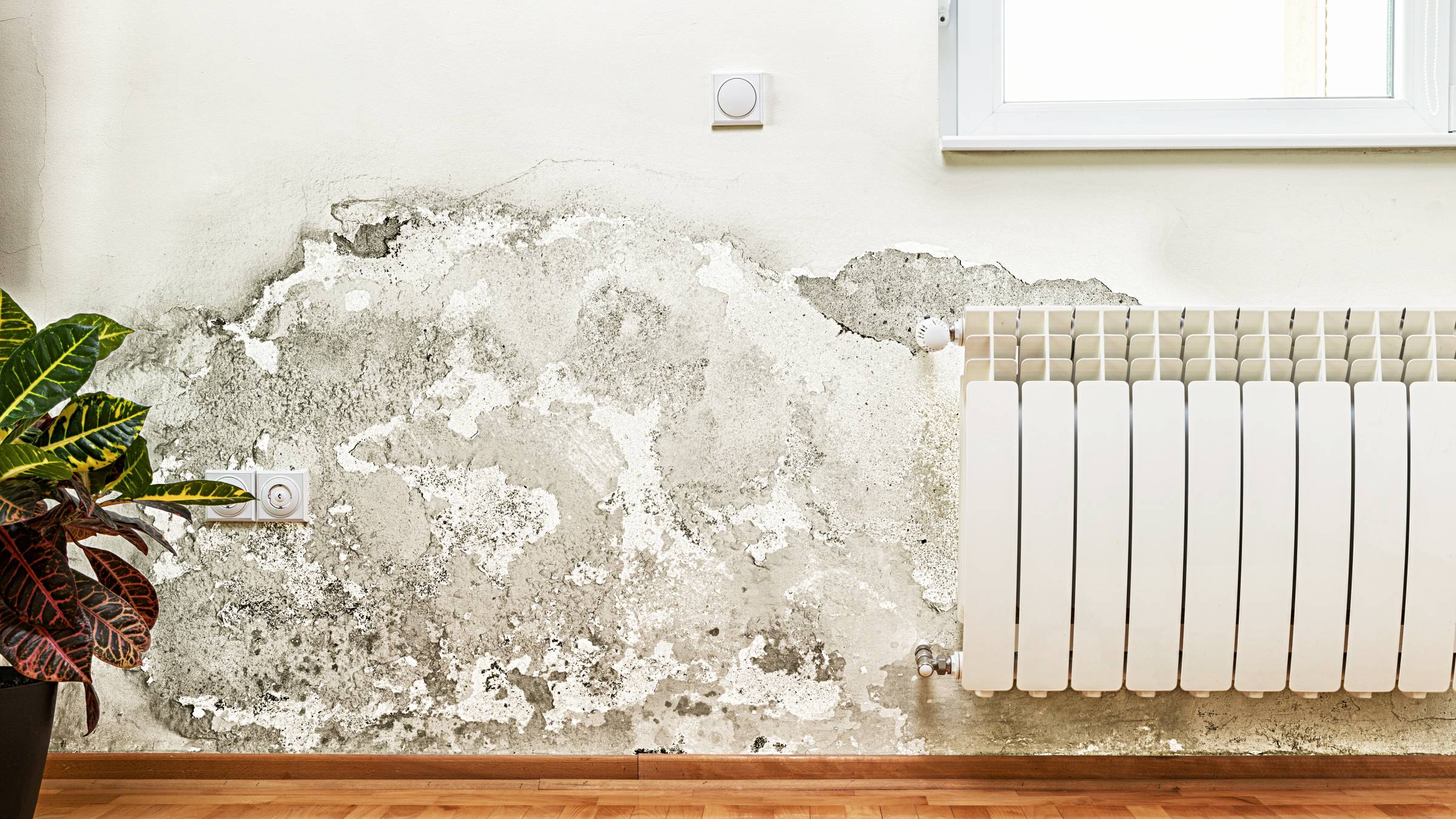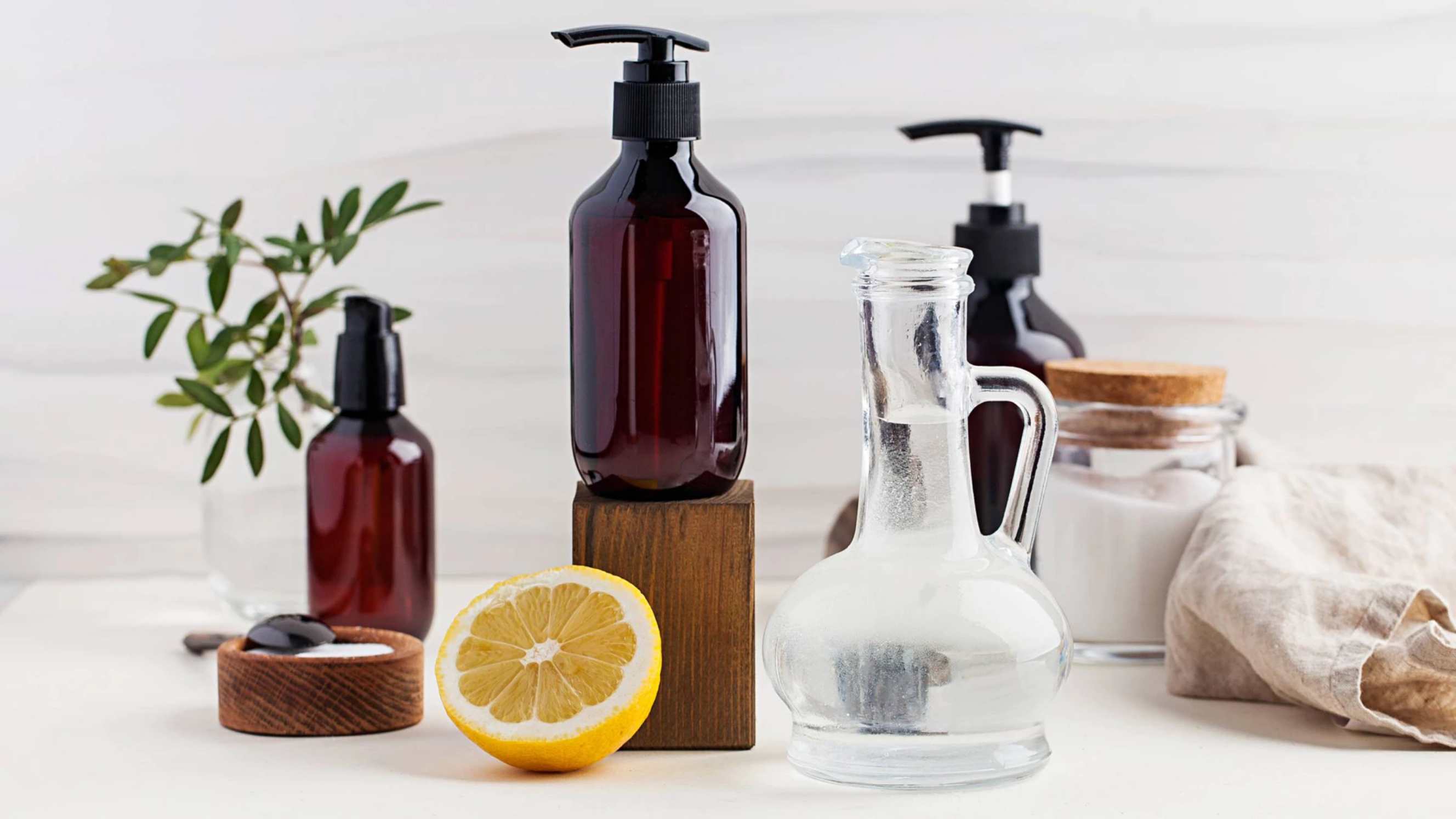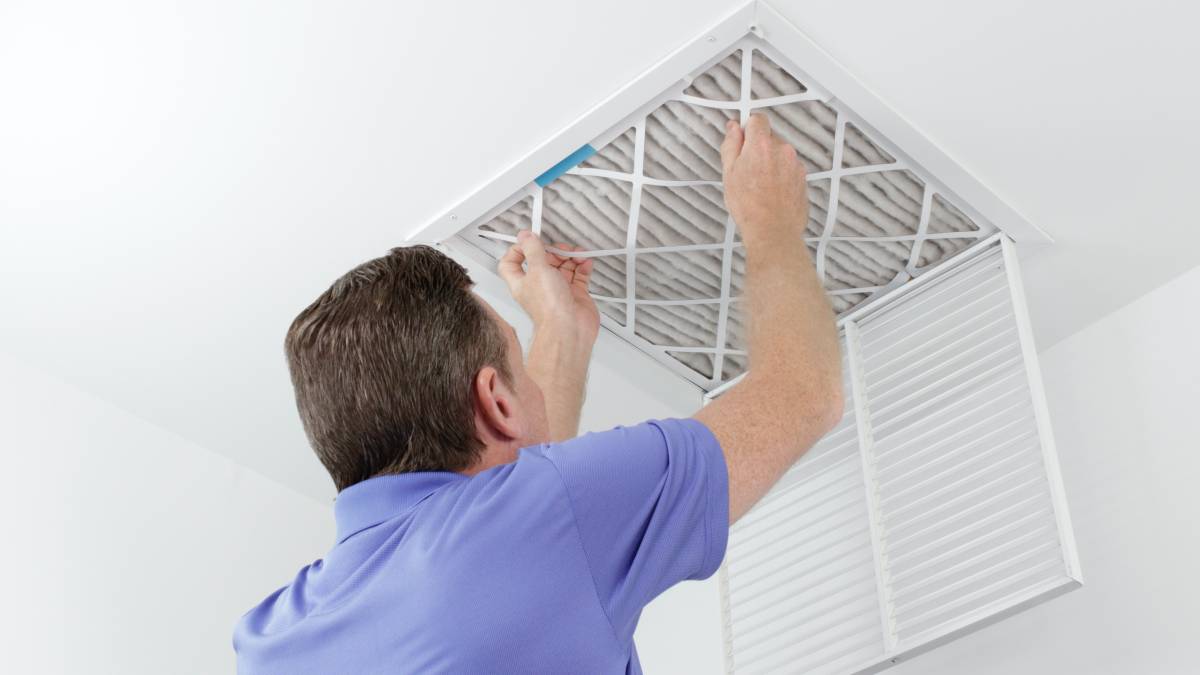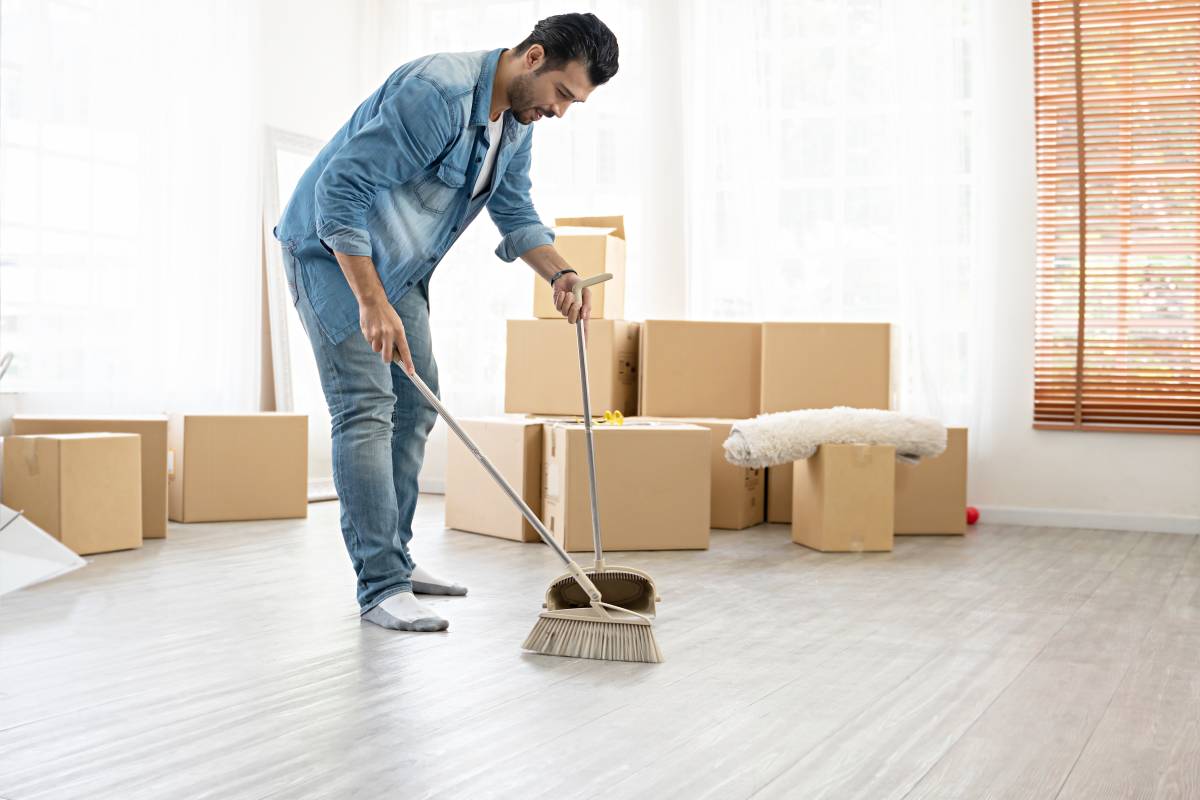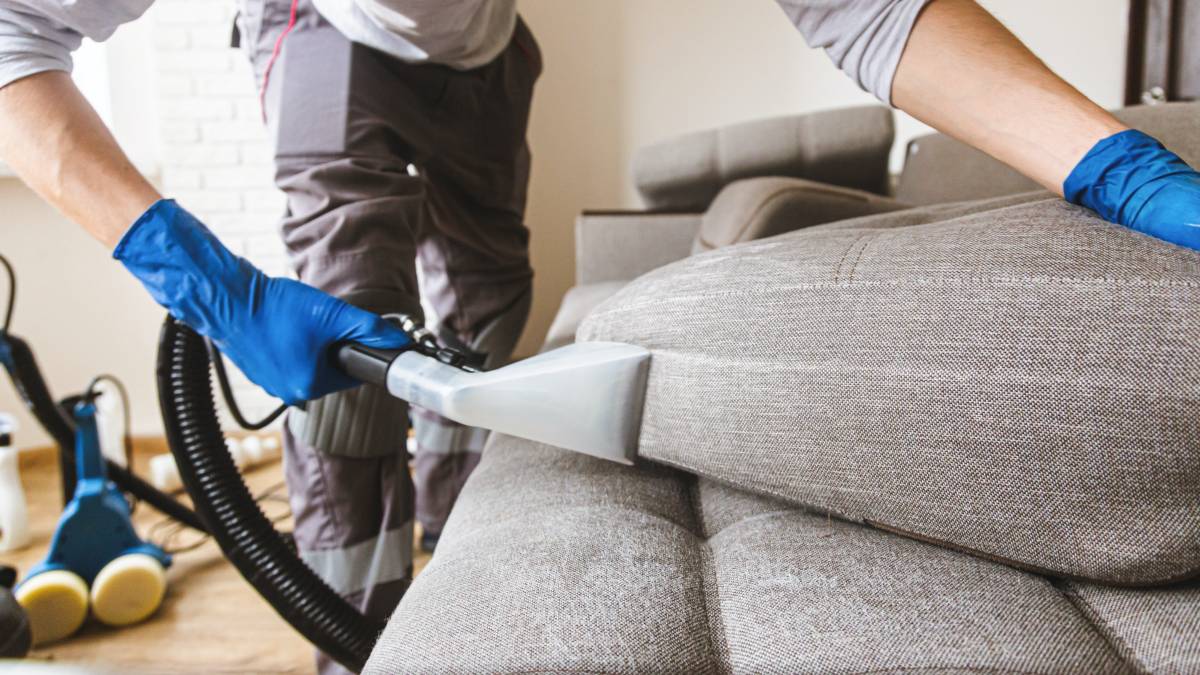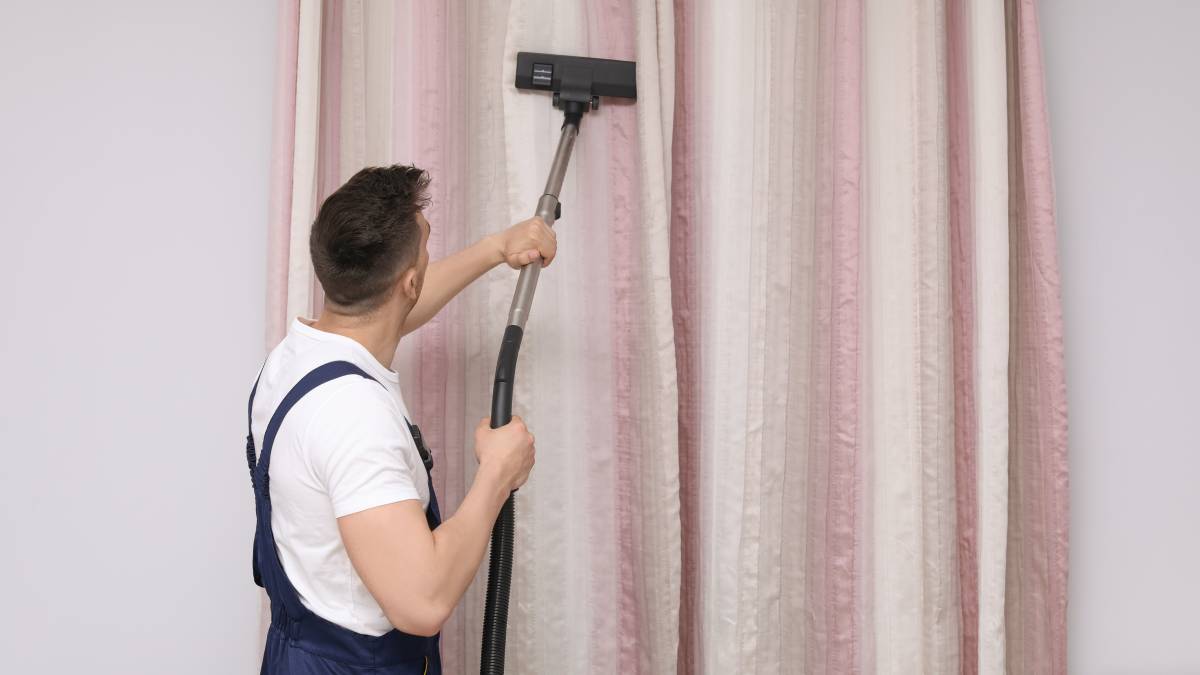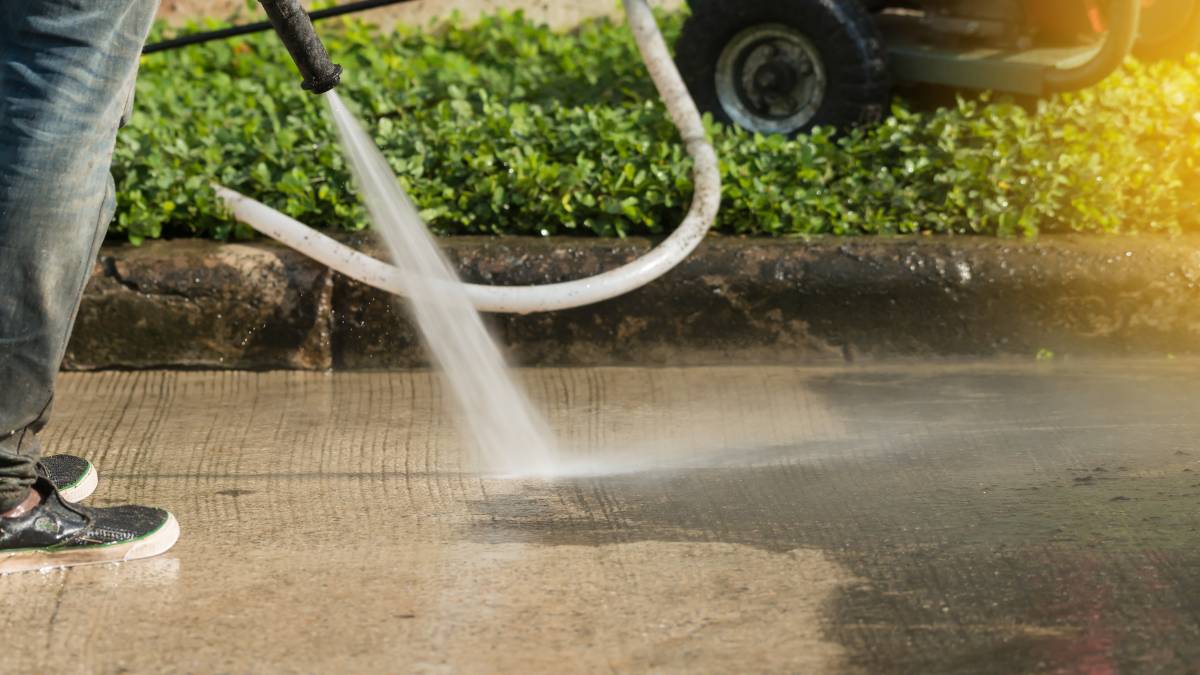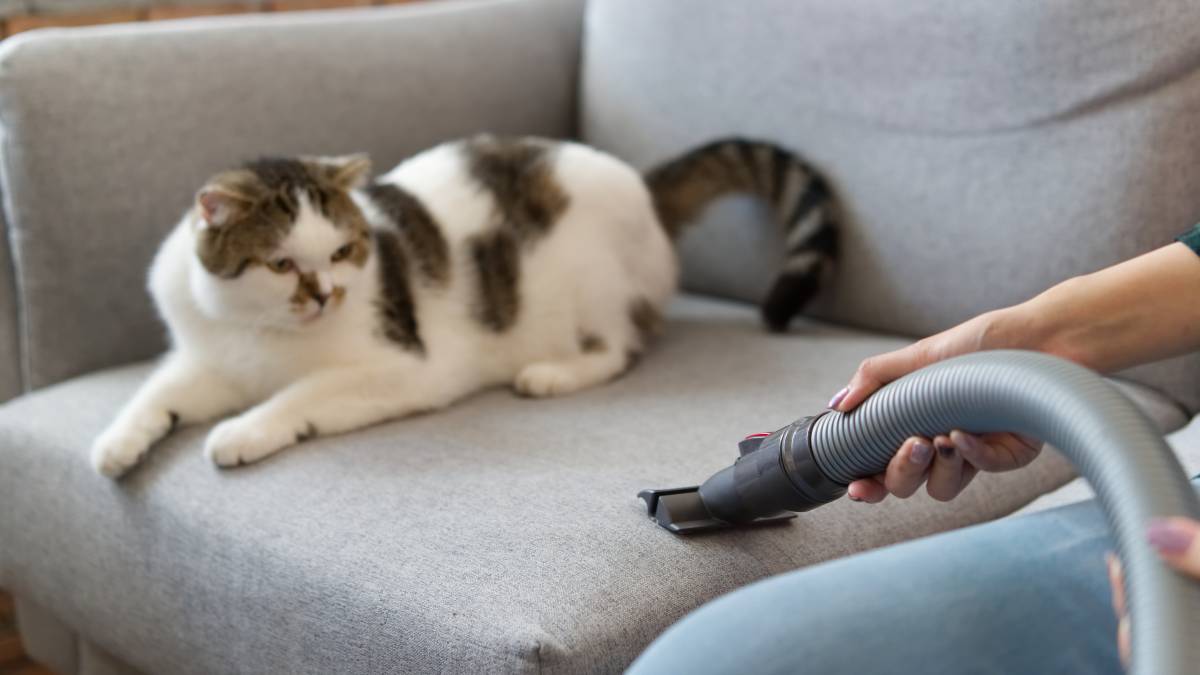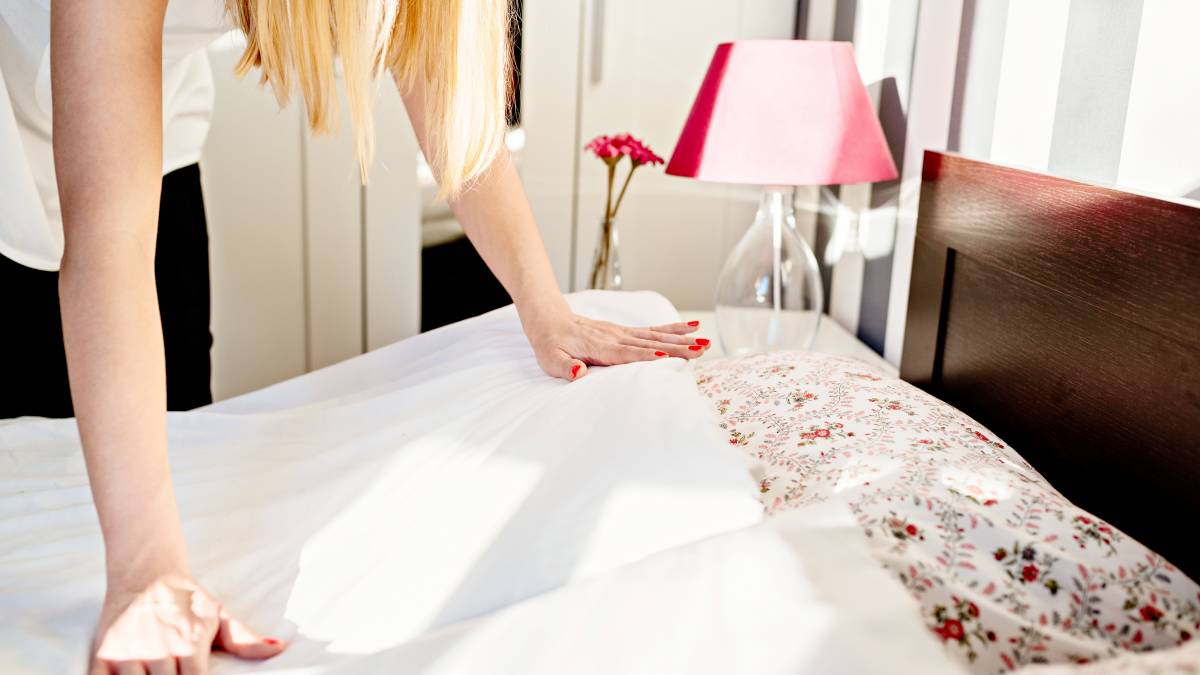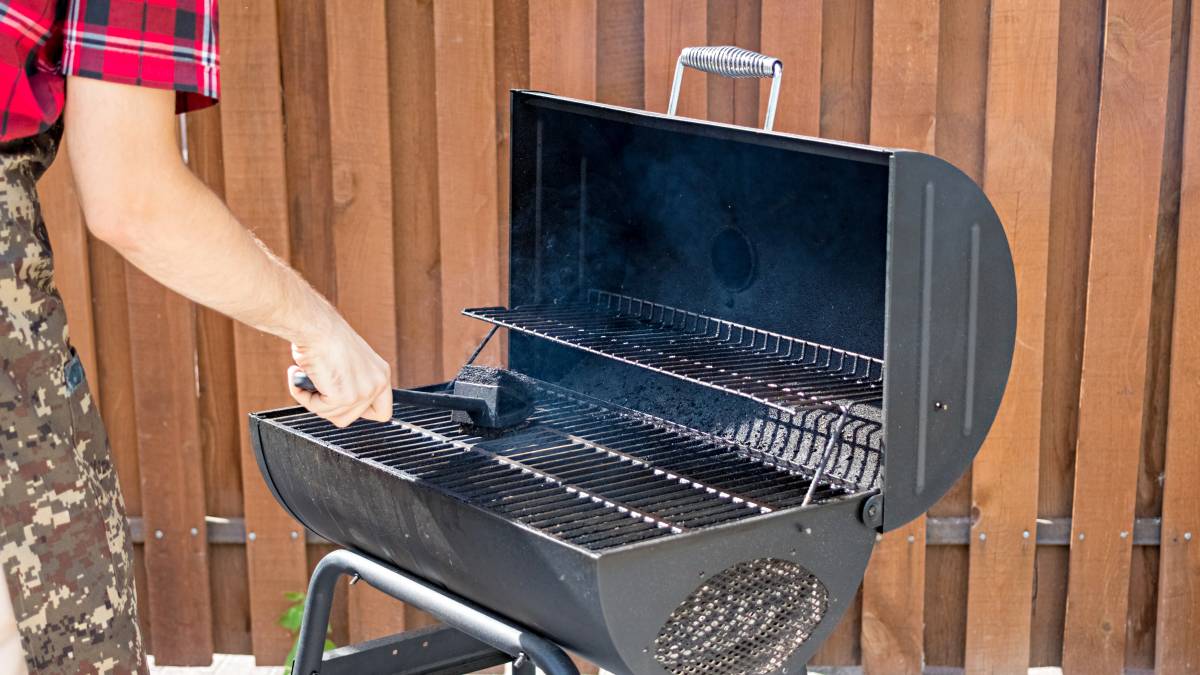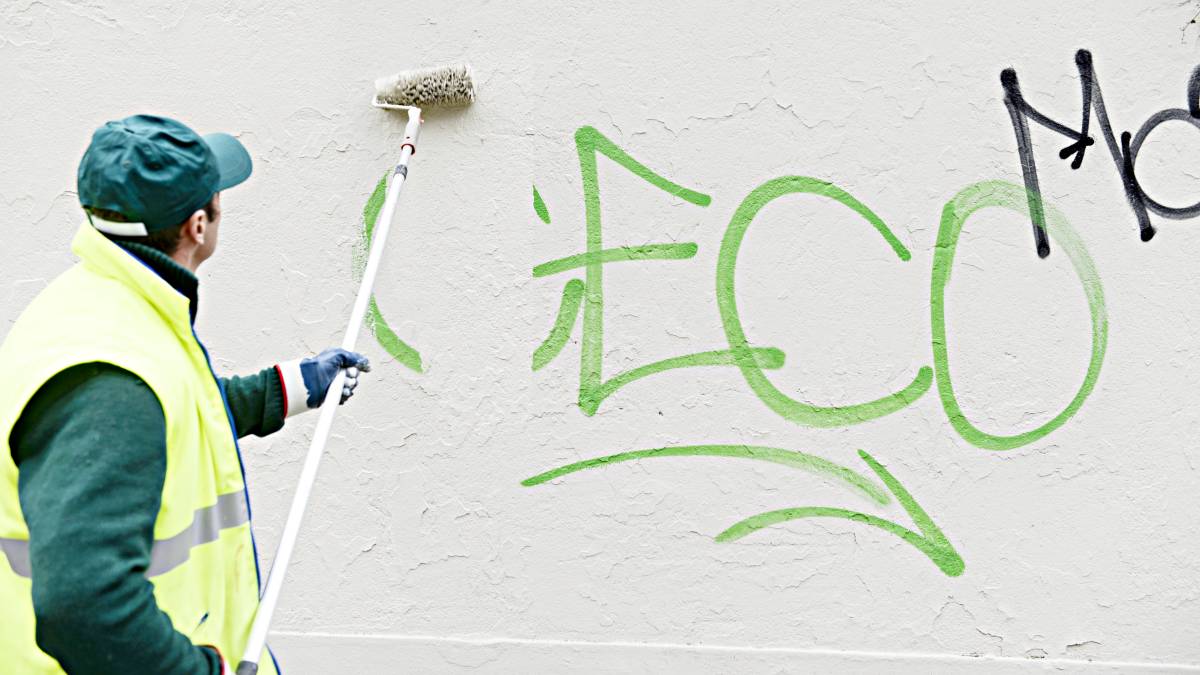- Home/
- Comparisons/
- Cleaning/
- Sweeping vs Vacuuming
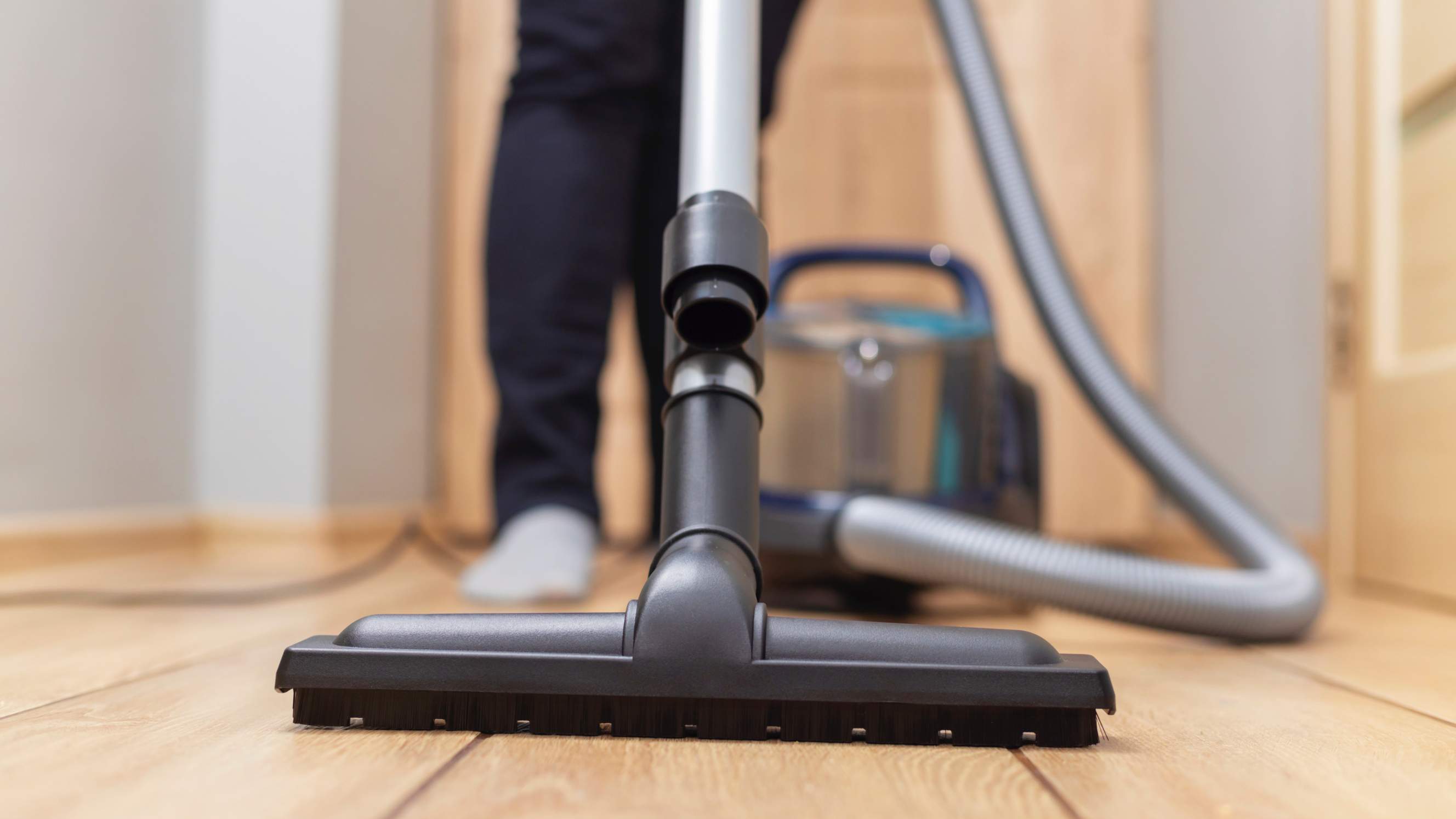
Sweeping vs vacuuming: What is the best way to clean floors?
Comparing sweeping and vacuuming based on their cleaning efficiency, floor type compatibility, surface protection, and more.
Hire a cleaning expertLast Updated on
Key Facts
- Sweeping is the manual process of using a broom to collect dirt and debris from hard surfaces.
- Vacuuming is the use of a vacuum cleaner to suction up dust and stains from various types of flooring.
Cleaning floors can be a never-ending chore, but it’s a crucial part of maintaining a tidy and healthy home. However, when it comes to hard floors, many people struggle with choosing and comparing sweeping vs vacuuming.
With a broom in one hand and a vacuum hose in the other, it’s easy to wonder which is more effective in the fight against dirt and grime. Sweeping is known for its simplicity and versatility. But, vacuums have a modern whirl that promises a deep clean and greater convenience. So, what is the best way to clean your floors?
This is where this guide comes in. We’ll look into the strengths and weaknesses of sweeping vs vacuuming in terms of different factors. By the end, you’ll hopefully know how to pick what’s best for keeping your floors spotless.
What is sweeping?

Sweeping is one of the oldest and most traditional methods of cleaning. It involves using a broom or brush to physically push debris across a floor towards a certain direction, usually into a dustpan.
This method is particularly effective on hard surfaces such as wood, tile, or linoleum. This is because, in these floor types, the dirt is typically easy to see and gather.
Sweeping a floor is essentially a straightforward, low-tech approach that doesn’t require electricity or expensive equipment. It’s known for its accessibility and the minimal effort it demands to keep surfaces clean.
What is vacuuming? 
Vacuuming, which some people also call hoovering, involves the use of an electrical appliance. The vacuum cleaner is designed to use suction to remove dust and other particles from floors and upholsteries.
If you effectively hoover the floor, you can get rid of fine particles and allergens that brooms might leave behind. This makes it particularly beneficial for people with allergies or respiratory issues.
The correct way to vacuum involves a systematic approach. You start from one corner of the room and move in a pattern to ensure every part of the floor is covered.
Additionally, using attachments designed for specific surfaces can enhance the cleaning process. Vacuum cleaners are also best suited for carpeted floors, rugs, and hard floors with crevices where grime tends to accumulate.
Vacuum cleaners come in both cordless and corded versions, with the latter requiring a separate power source. They're also available in both bagged and bagless designs, each with their own advantages. The bagged version uses a disposable bag to collect dust and debris, while the bagless model relies on a reusable container.
Vacuuming vs sweeping: Which floor cleaning technique is more effective?
Choosing between sweeping and vacuuming as your go-to floor cleaner method involves weighing several factors. Each technique has its unique advantages and best-use scenarios that are influenced by the type of flooring, the level of cleanliness desired, and individual preferences for thoroughness.
Below, we’ll give you a clearer understanding of which method might be the most effective for maintaining your floors and keeping your home environment healthy.
In terms of cleaning efficiency
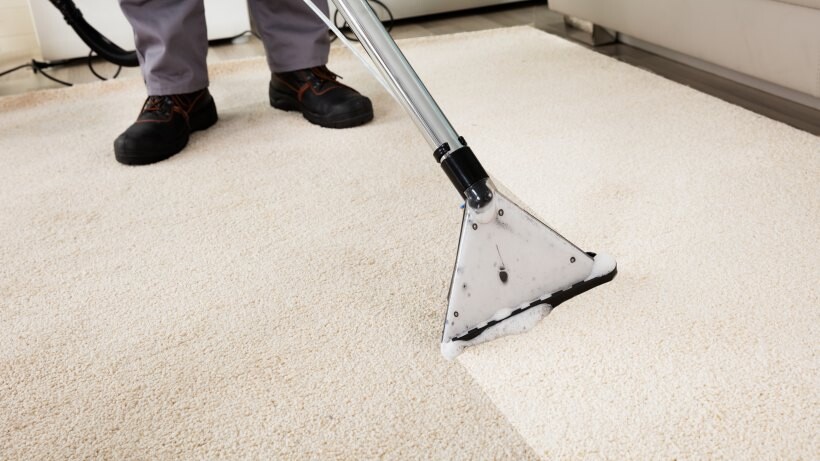
Vacuuming generally outperforms sweeping when we consider their cleaning results. The primary reason is that vacuum cleaners, using their suction power, are able to remove more particles than a broom.
The difference can significantly impact the overall air quality, especially in homes with pets or for individuals with allergies. Sweeping, while effective for removing visible debris, can sometimes redistribute dust into the air rather than fully removing it.
So how often should you hoover? Well, it’s advisable to vacuum at least once a week in high-traffic areas and possibly more frequently in homes with animals or people with allergies.
In terms of convenience
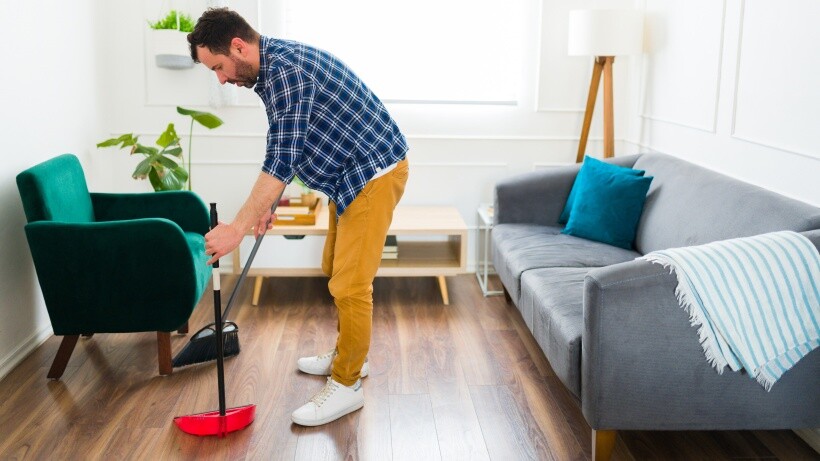
When comparing sweeping and vacuuming, it’s important to look into factors such as setup time, ease of use, and maintenance. You want to have a cleaning tool that fits into your daily routine and doesn’t feel like a chore.
Sweeping is typically quicker to set up, as all you need is a broom and dustpan. It requires no electricity, and the tools you’d need are easy to store and pull out. However, it can be tiring on the arms and back if done for an extended period of time.
On the other hand, vacuuming involves significant setup time and finding an outlet. However, it makes up for it by offering multi functionality. Modern vacuums come with attachments that can handle various surfaces and hard-to-reach areas. There are even robot vacuums available now that can be programmed to clean on a schedule.
In terms of floor type compatibility
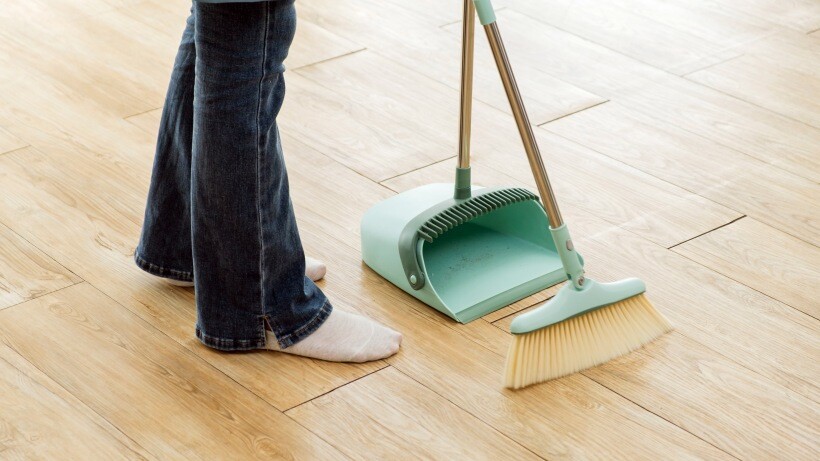
Choosing between sweeping and vacuuming often boils down to the type of flooring in your home. This might seem like a small detail, but it can make a significant difference in the effectiveness of your cleaning routine.
Sweeping is universally applicable to all flooring types. It offers a gentle approach that is especially crucial for tile, vinyl, and wood floors, where avoiding scratches and maintaining finish are important. It’s also effective on rugs and non-carpeted flooring for a quick tidy-up.
In contrast, vacuuming requires a bit more judgement. While most modern vacuums are equipped with settings and attachments for various floor types, using the wrong ones can damage some surfaces. Hardwood flooring and delicate tiles, for example, need a softer brush roll and lower suction to prevent scratches and wear.
Carpets and area rugs, however, benefit a lot from vacuuming. It can remove dirt and allergens deeply embedded within fibres, which is something sweeping cannot achieve.
In terms of surface protection
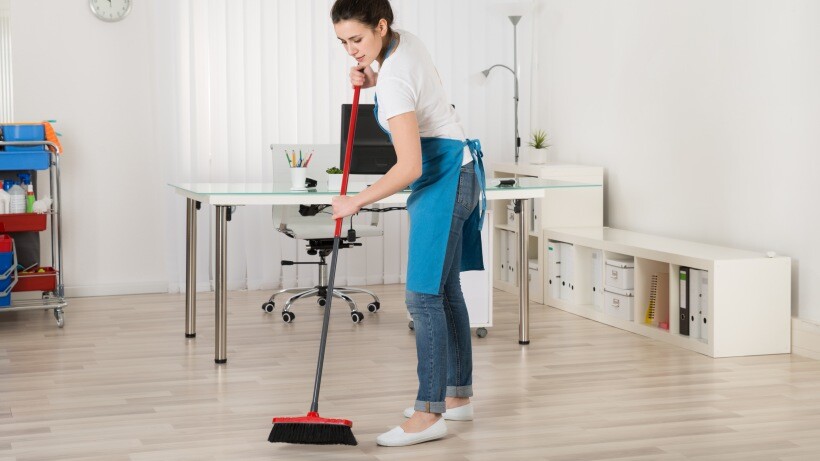
When all is said and done, it’s crucial to understand the impact of sweeping and vacuuming on your floor’s surface. You wouldn’t want long-term damage just because of improper cleaning methods.
Sweeping, with its soft bristles, is inherently gentle on all floor types. It’s an ideal approach for maintaining the integrity of a hardwood floor.
On the other hand, can you vacuum a hardwood floor? The answer is yes, but with caution. Selecting the right one is crucial—it should have adjustable suction and a soft brush attachment specifically designed for fragile surfaces.
In terms of allergen removal
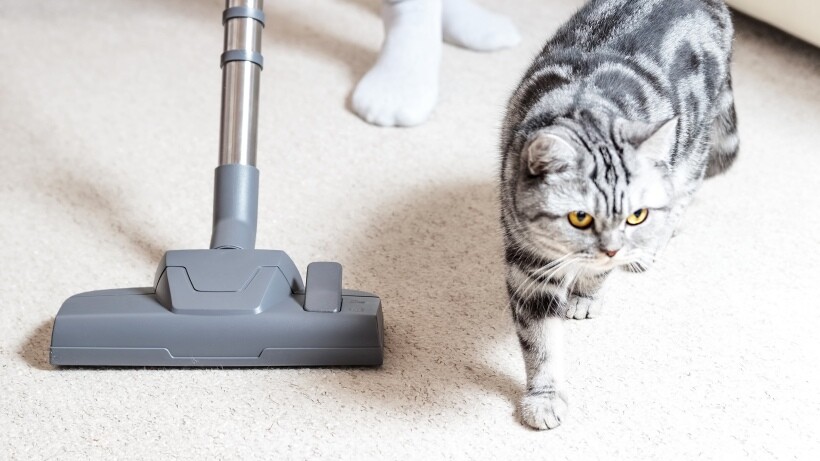
When making sure that your house is allergen-free, vacuuming tends to be more effective than sweeping. This is because vacuums can pick up and trap tiny particles, including pollen, pet dander, and dust mites. Brooms might simply push around or fail to capture these things.
Most modern vacuums are also equipped with HEPA filters that are designed to capture even the microscopic particles that you can’t readily see with the naked eye. This ensures that they don’t get released back into the air.
Sweeping can also be used to achieve the same thing, but it would take more effort. It’ll be a bit messy, too, especially when dealing with fine dust particles. It can even cause them to become airborne and potentially irritate allergies or respiratory conditions. Some resort to mopping wet and then dry after sweeping to counter this.
In terms of cost-effectiveness
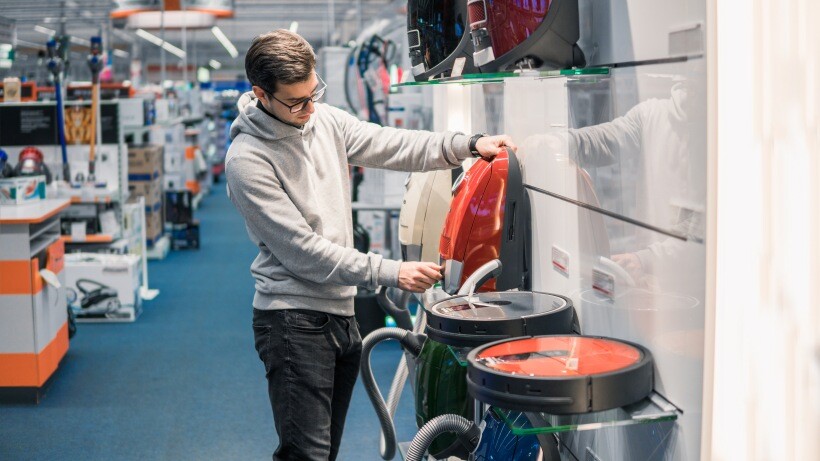
When dealing with long-term financial planning for home maintenance, it’s essential to think about the cost-effectiveness of your cleaning methods. It might seem unnecessary, but such expenses can add up and affect your budget in the long run. For instance, floor cleaning typically costs £70 to £120.
Initially, brooms appear to be a highly affordable option, with prices ranging from £1.80 to £14.64. They’re accessible for almost all budgets and require no electricity to operate. Sweeping also has minimal to no maintenance costs.
Meanwhile, vacuums vary widely in price, stretching from £39.99 to £449 for basic models. Window or handheld vacuums average at about £24.99, and the high-end models can soar up to £700.00.
Despite the initial investment, though, vacuums offer deeper cleaning capabilities. However, it’s worth noting that there are operating costs, including electricity and occasional maintenance or parts replacement, that need to be considered.
Say goodbye to dirty floors - achieve exceptional floor cleaning with Airtasker
Whether you’re a firm believer in the power of brooms for your daily clean-ups or lean towards the deep-cleaning capabilities of vacuums, maintaining spotless floors is a task that requires regular attention and effort. However, not everyone has the time, energy, or physical capability to keep up with this chore.
This is where Airtasker comes into play. By posting your floor cleaning task on the platform, you can connect with experienced people who are ready to take this chore off your hands. They come equipped with the necessary tools and knowledge—whether it’s for quick cleaning or a deep vacuuming session.
Make sure your floors are impeccably clean without lifting a finger. Post a task today and connect with local professionals who can help you achieve a sparkling, clean home.
Sweeping vs vacuuming
| Sweeping |
Vacuuming |
|
| Cleaning Efficiency |
Effective for visible debris on hard surfaces, but can’t capture finer particles |
Removes more particles and allergens from various floor types due to suction power |
| Convenience |
Quick setup with no electricity required, but can be physically taxing over long periods |
Involves setup and finding an outlet but allows for multitasking and less physical effort |
| Floor-Type Compatibility |
Universally applicable to all floor types without risking damage |
Requires specific settings and attachments per floor type to prevent damage |
| Surface Protection |
Gentle with soft bristles, ideal for maintaining the integrity of delicate floors |
Can be used safely on a hardwood floor with the correct attachments and settings |
| Allergen Removal |
Less effective in removing fine particles, can cause allergens to become airborne |
More effective in trapping tiny particles and allergens, especially with HEPA filters |
| Cost-Effectiveness |
Low initial and maintenance costs |
Higher initial cost, with operating costs like electricity and maintenance |
FAQs on sweeping and vacuuming
Professionals often use a combination of high-grade brooms, vacuums, and mops. They usually choose the tool based on the floor type and level of cleanliness required.
Vacuuming is typically more effective than sweeping for removing pet hair, as vacuums can extract hair from carpets and upholstery more efficiently.
Yes, it’s okay to vacuum a hardwood floor, but it’s advisable to use a vacuum that has a setting for hardwood to avoid damaging the surface and not leave scratches.
Sweeping can sometimes redistribute dust into the air. For less airborne dust, consider using a damp mop or cloth after sweeping.
Find cleaners, fast
Post a task
Related articles
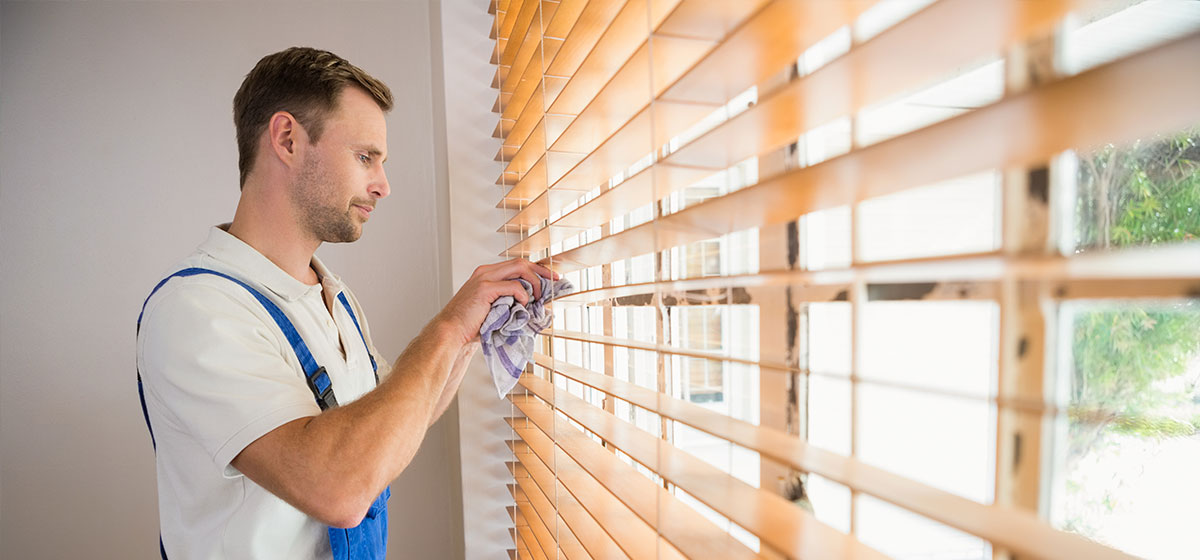
How to clean Venetian blinds
Read more

How to best clean a washing machine
Read more
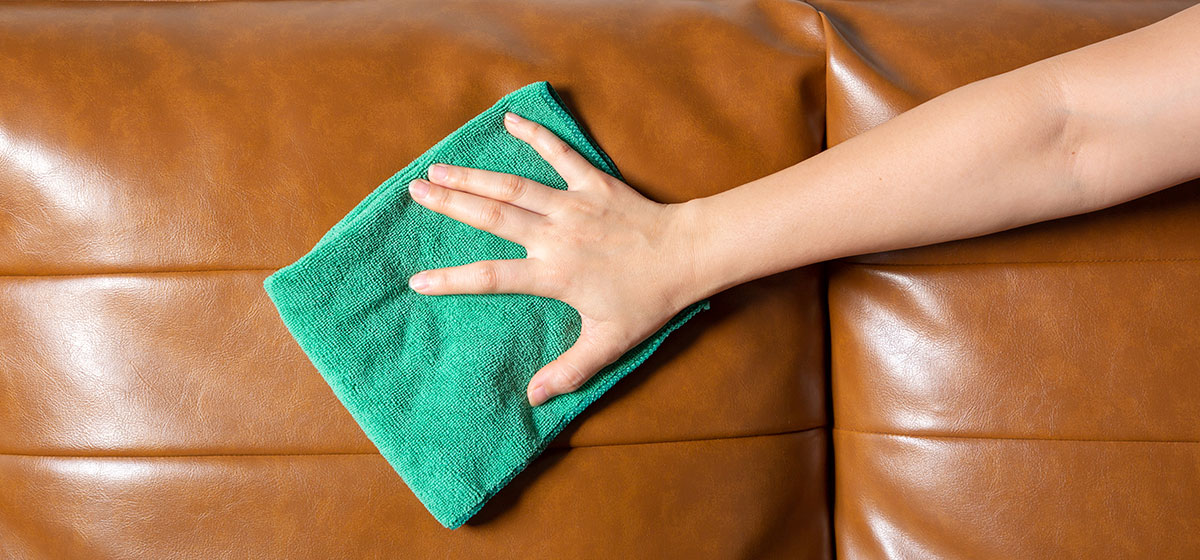
How to clean leather couch at home
Read more

How to get a cleaning certification
Read more
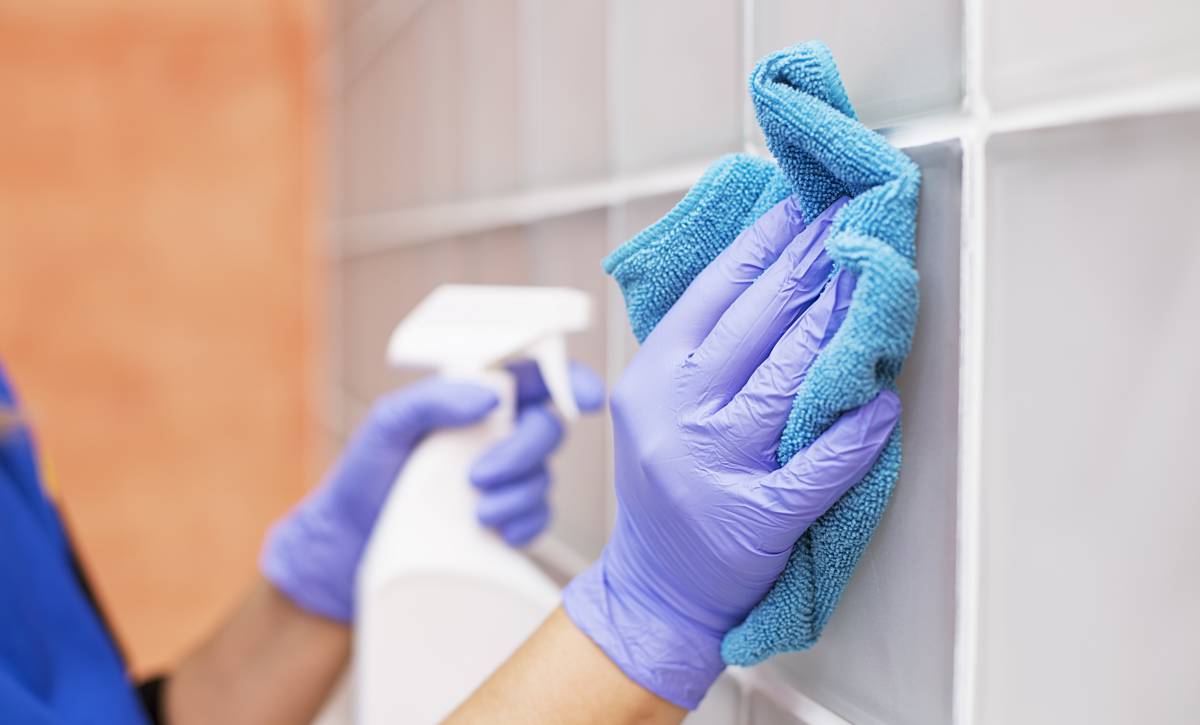
How to get more cleaning jobs
Read more

How to price cleaning jobs
Read more
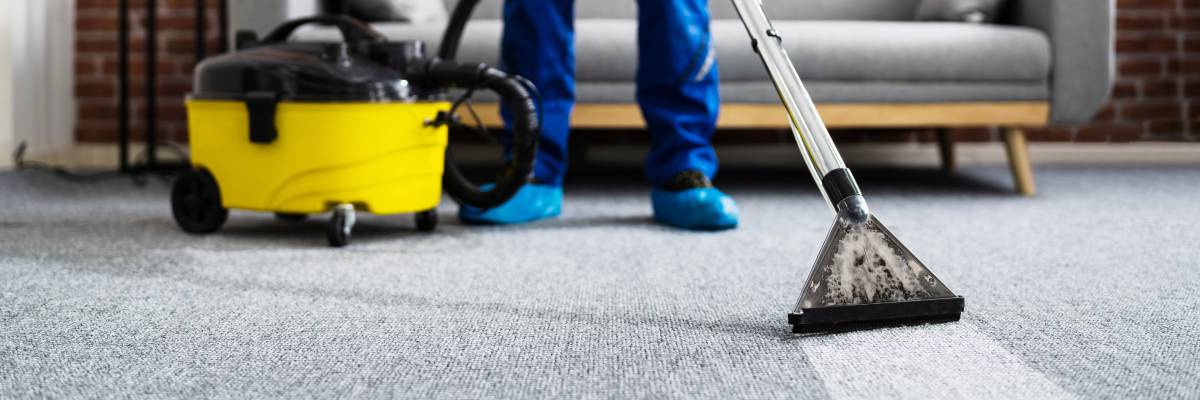
How to become a housekeeper
Read more
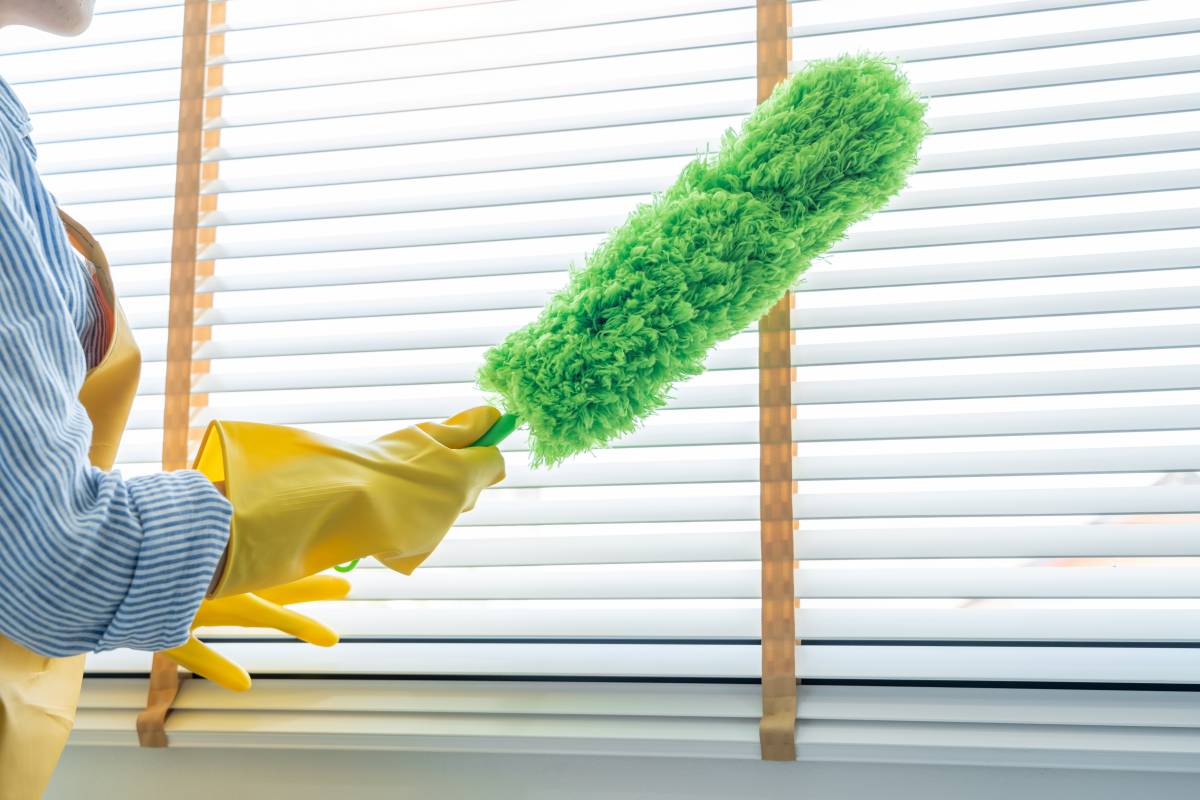
How to clean a duster
Read more
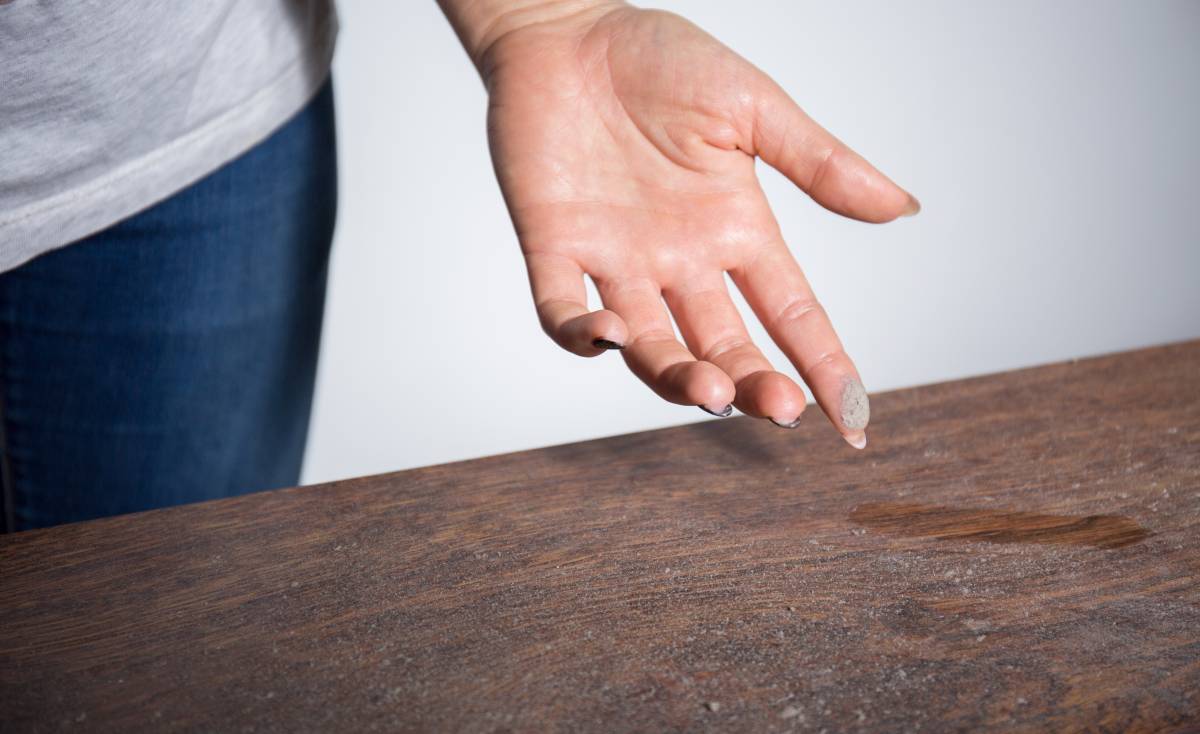
How to get rid of dust in your home
Read more
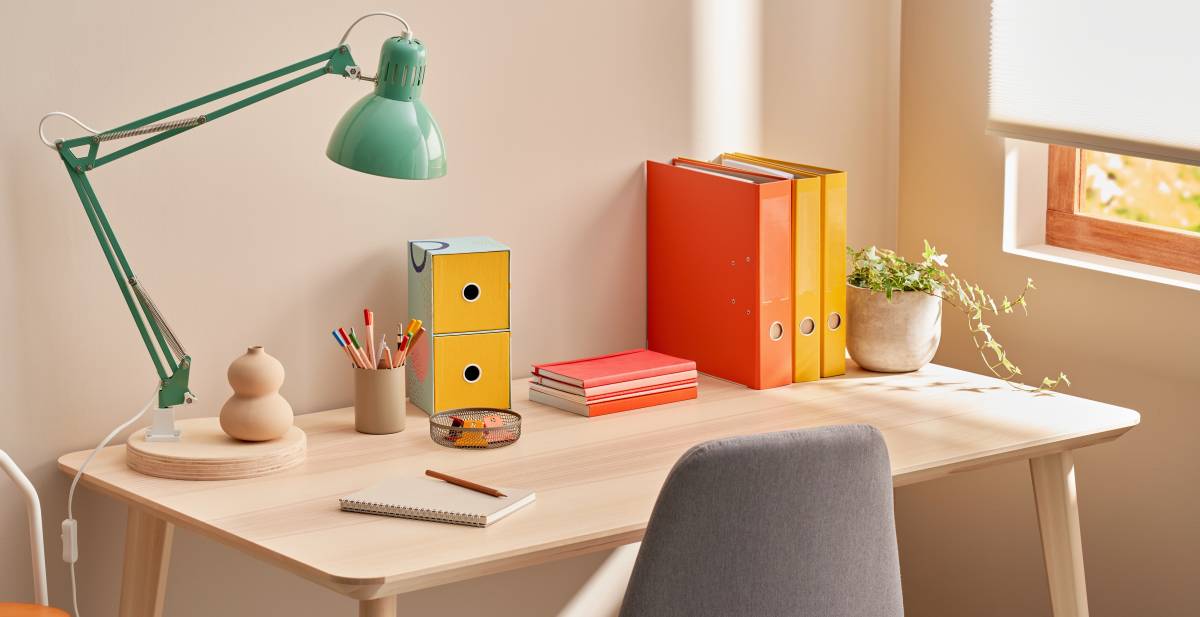
How to keep your desk dust-free
Read more
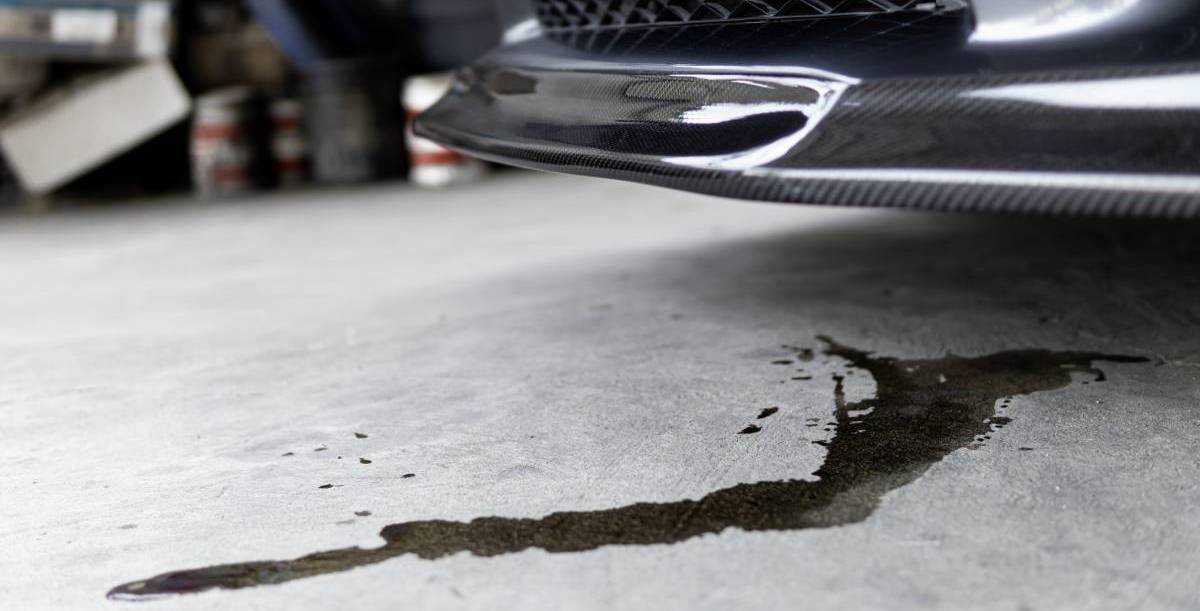
How to clean a garage floor
Read more

End of tenancy cleaning checklist
Read more
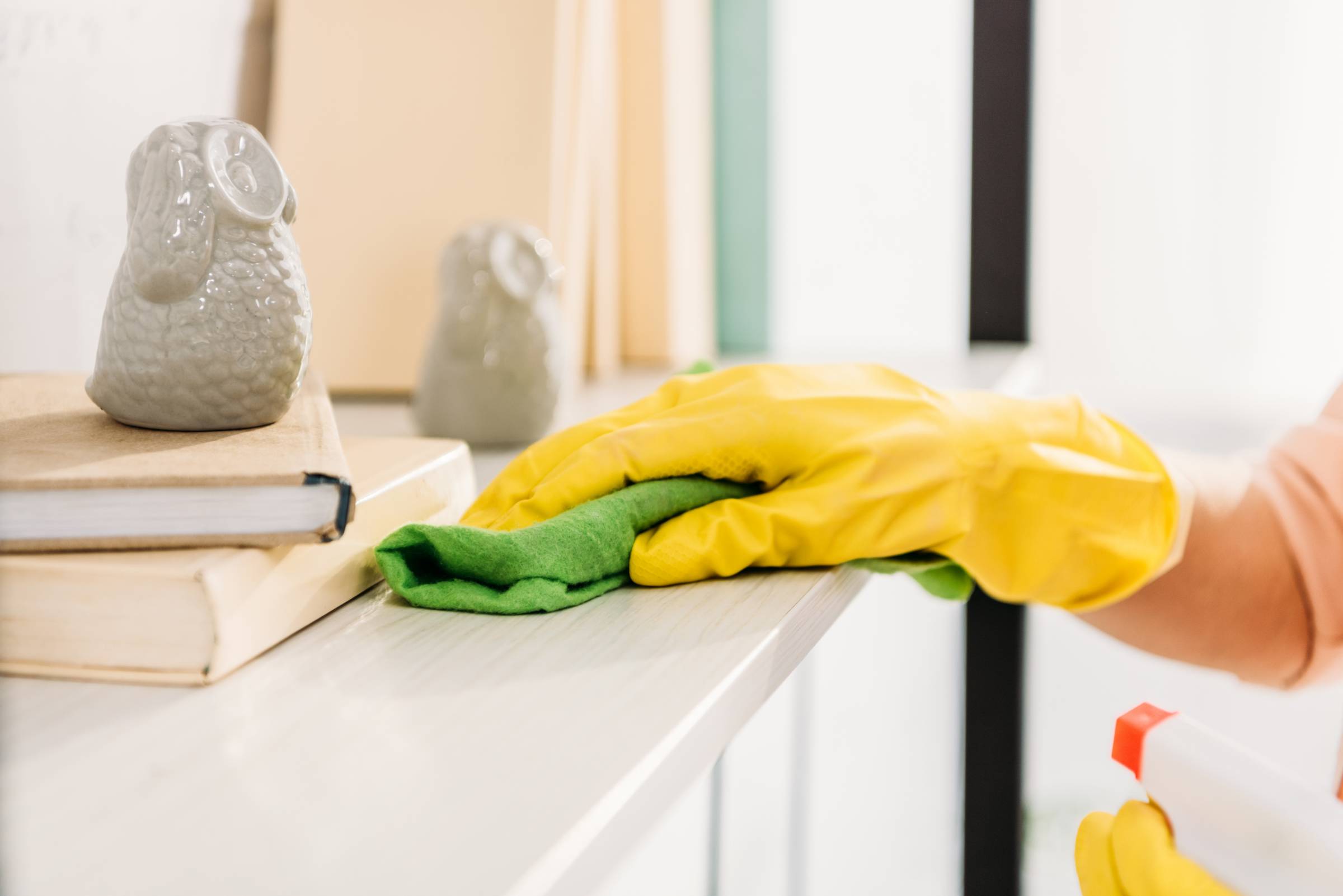
The ultimate spring cleaning checklist
Read more
Related price pages

How much does tile cleaning cost?
Read more
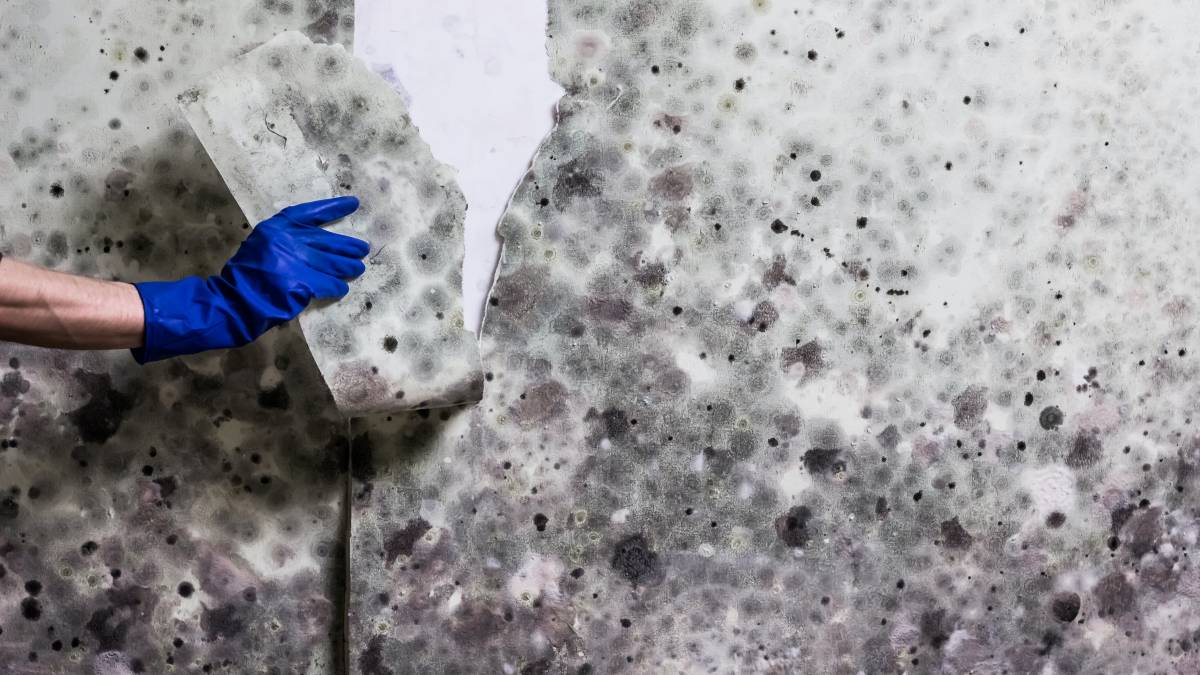
How much does mould removal cost?
Read more
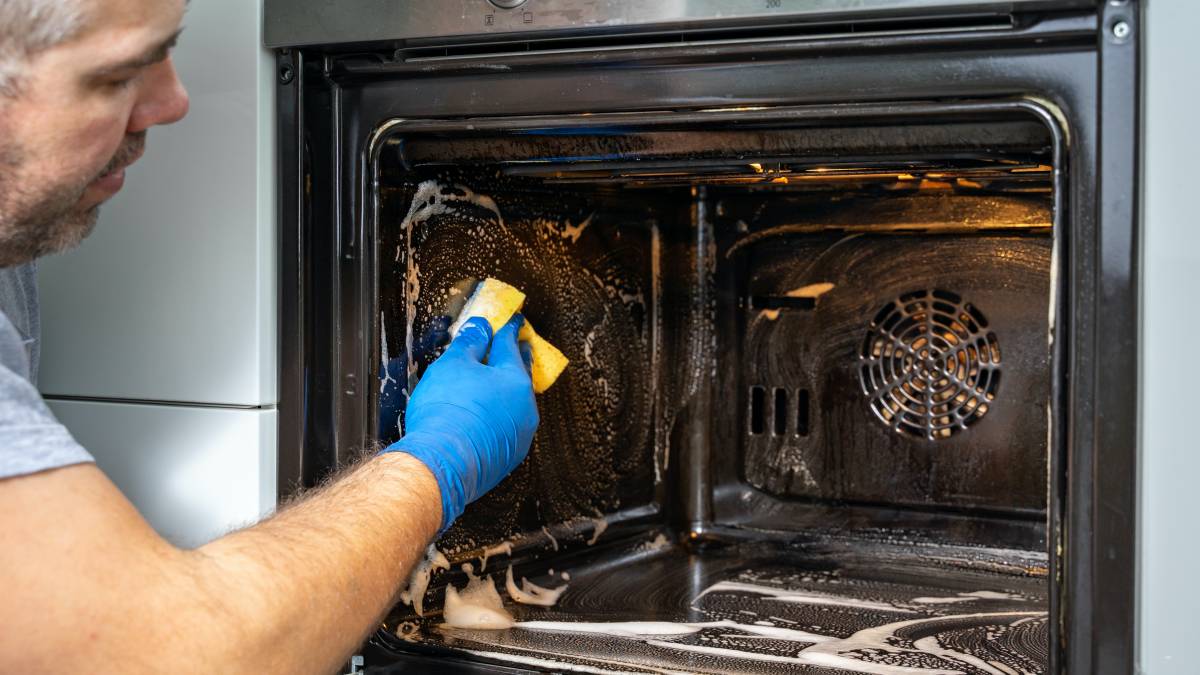
How much does oven cleaning cost?
Read more
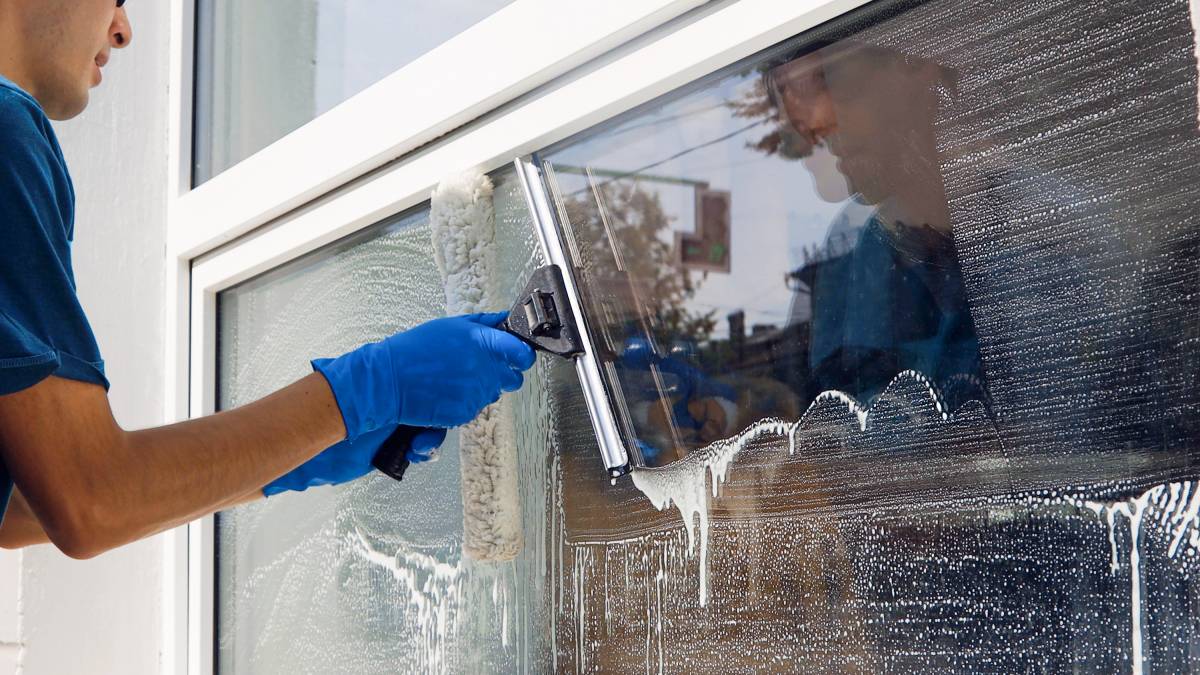
How much does a cleaner cost?
Read more
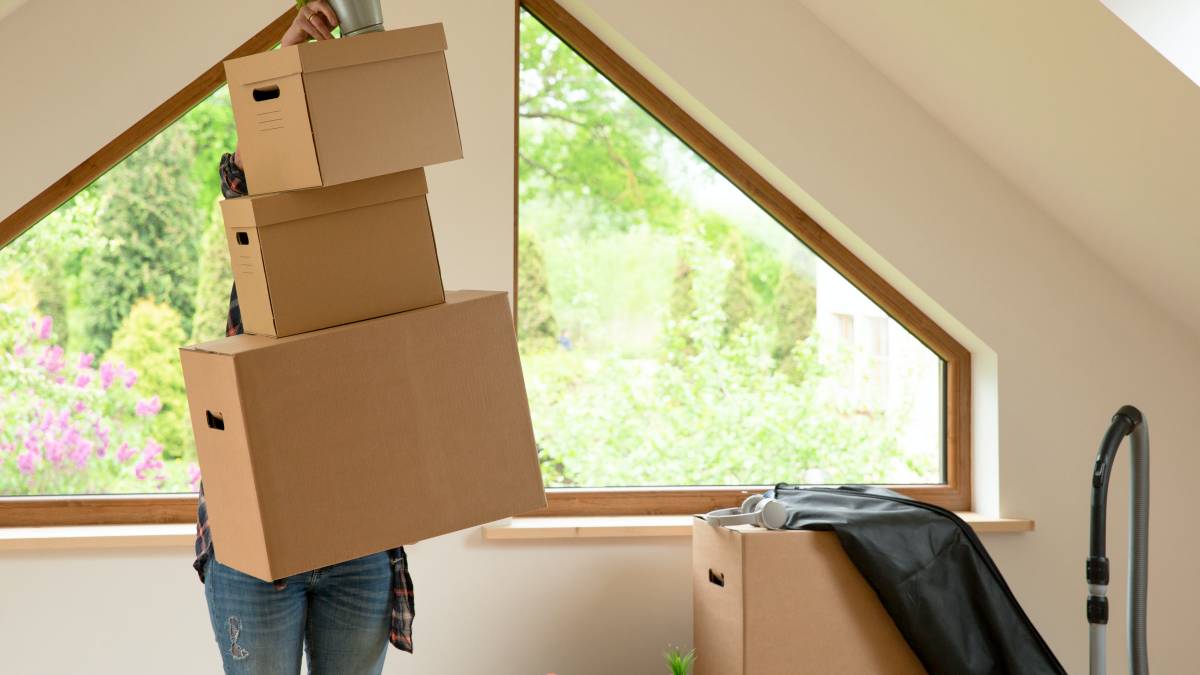
How much does attic cleaning cost?
Read more
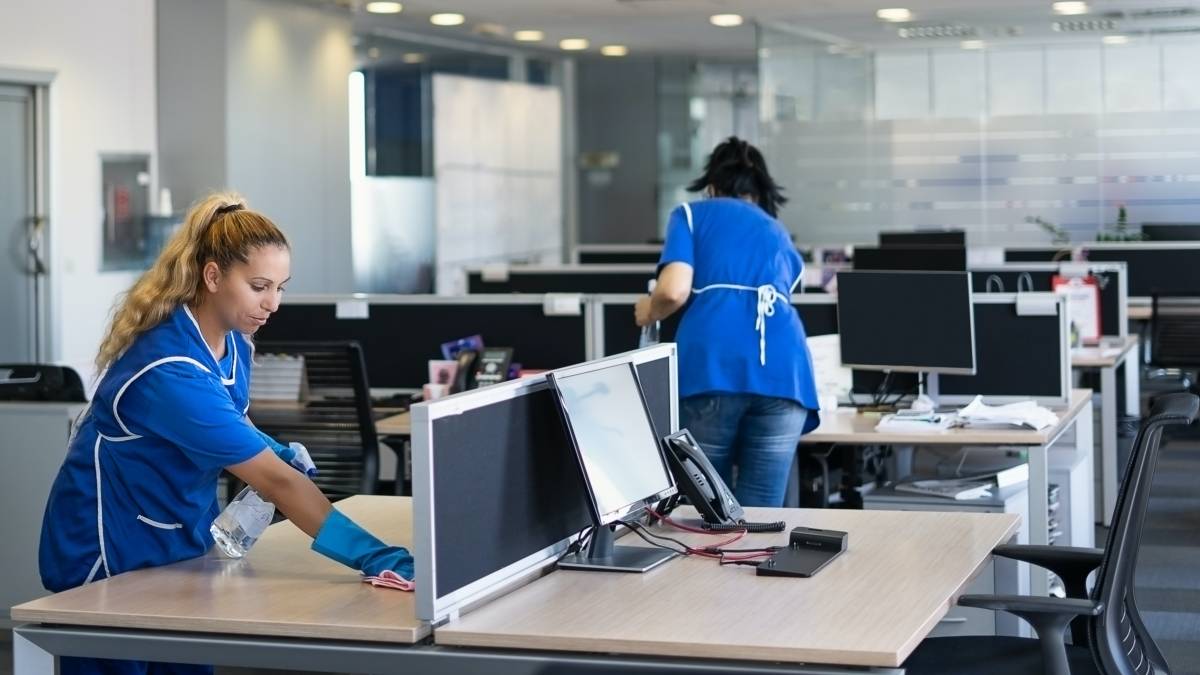
How much does office cleaning cost?
Read more
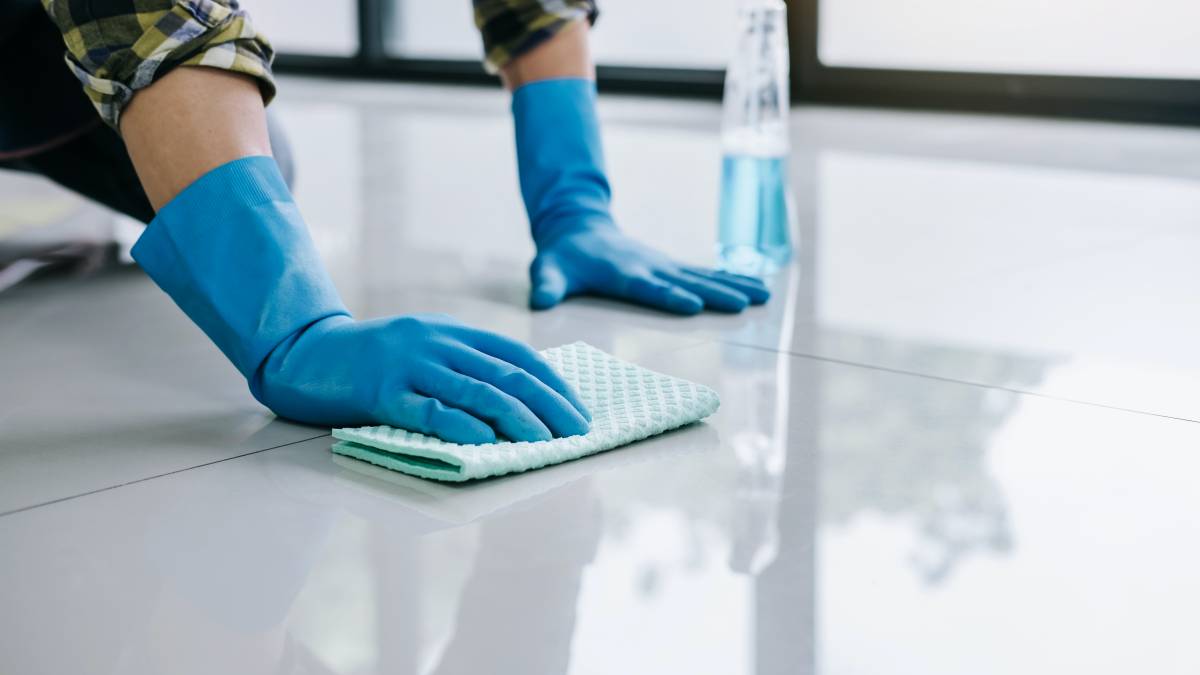
How much does floor cleaning cost?
Read more
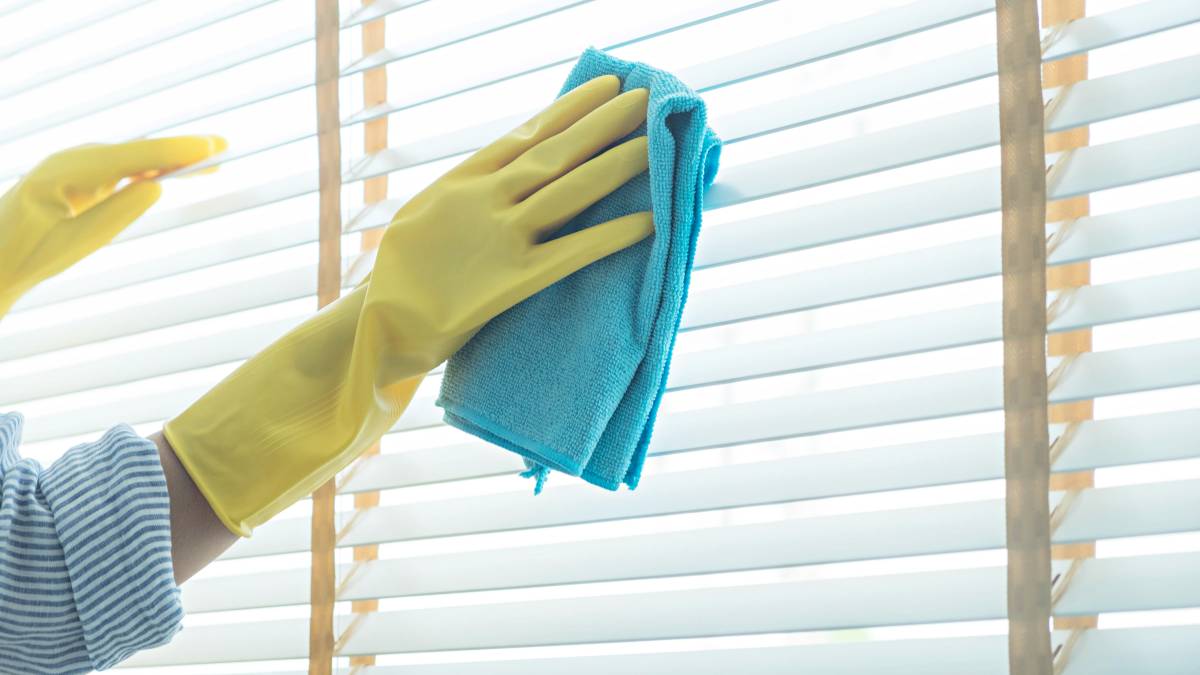
How much does blind cleaning cost?
Read more

How much does pressure washing cost?
Read more
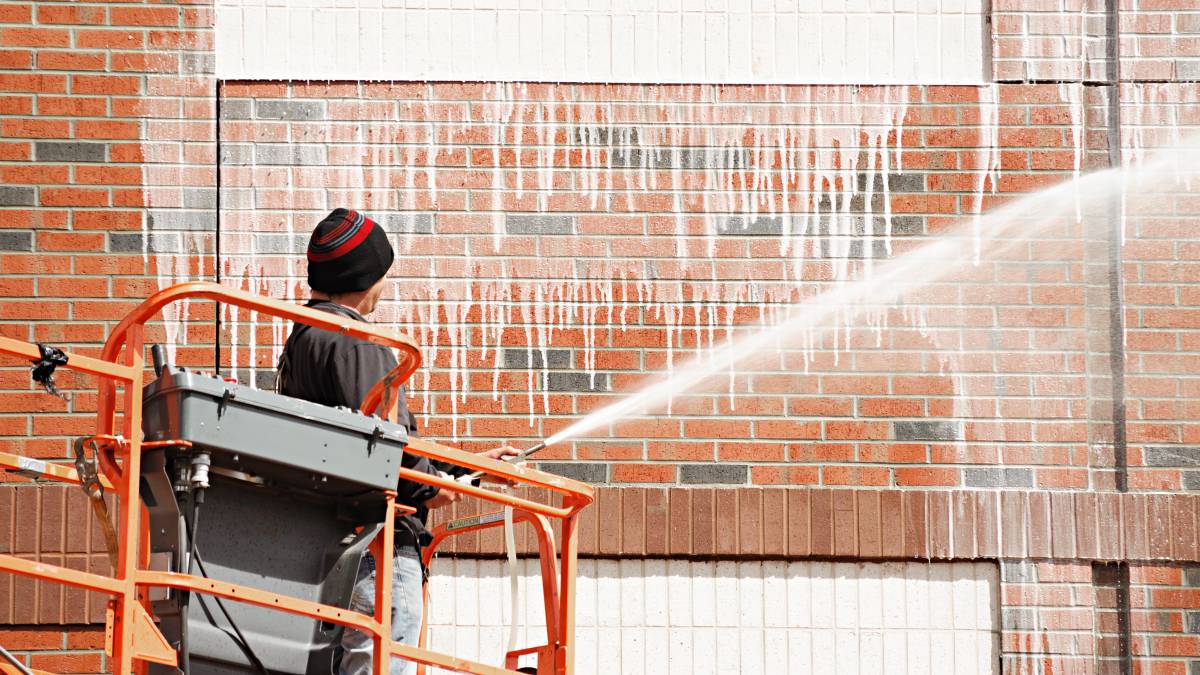
How much does brick cleaning cost?
Read more
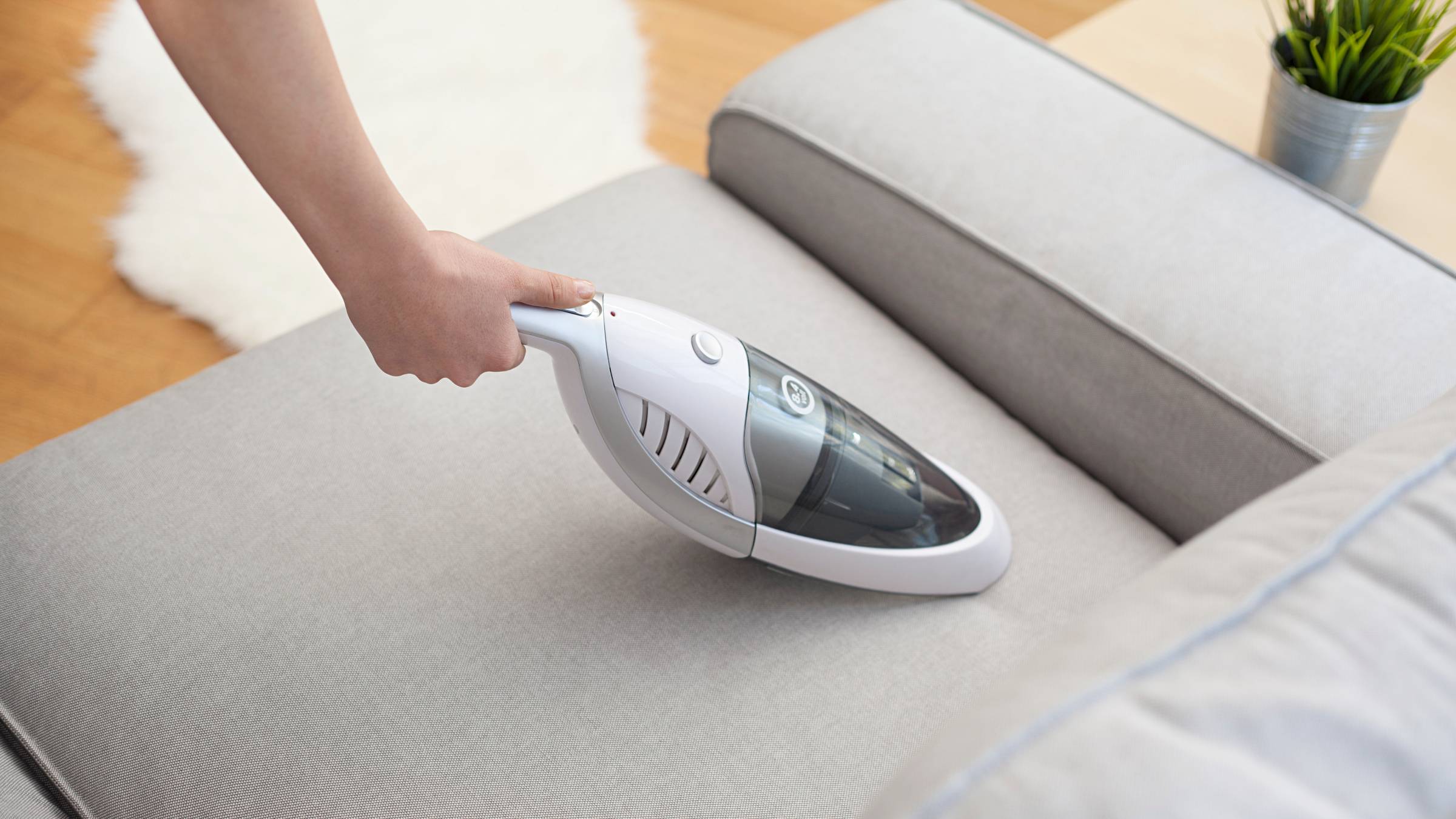
How much does sofa cleaning cost?
Read more
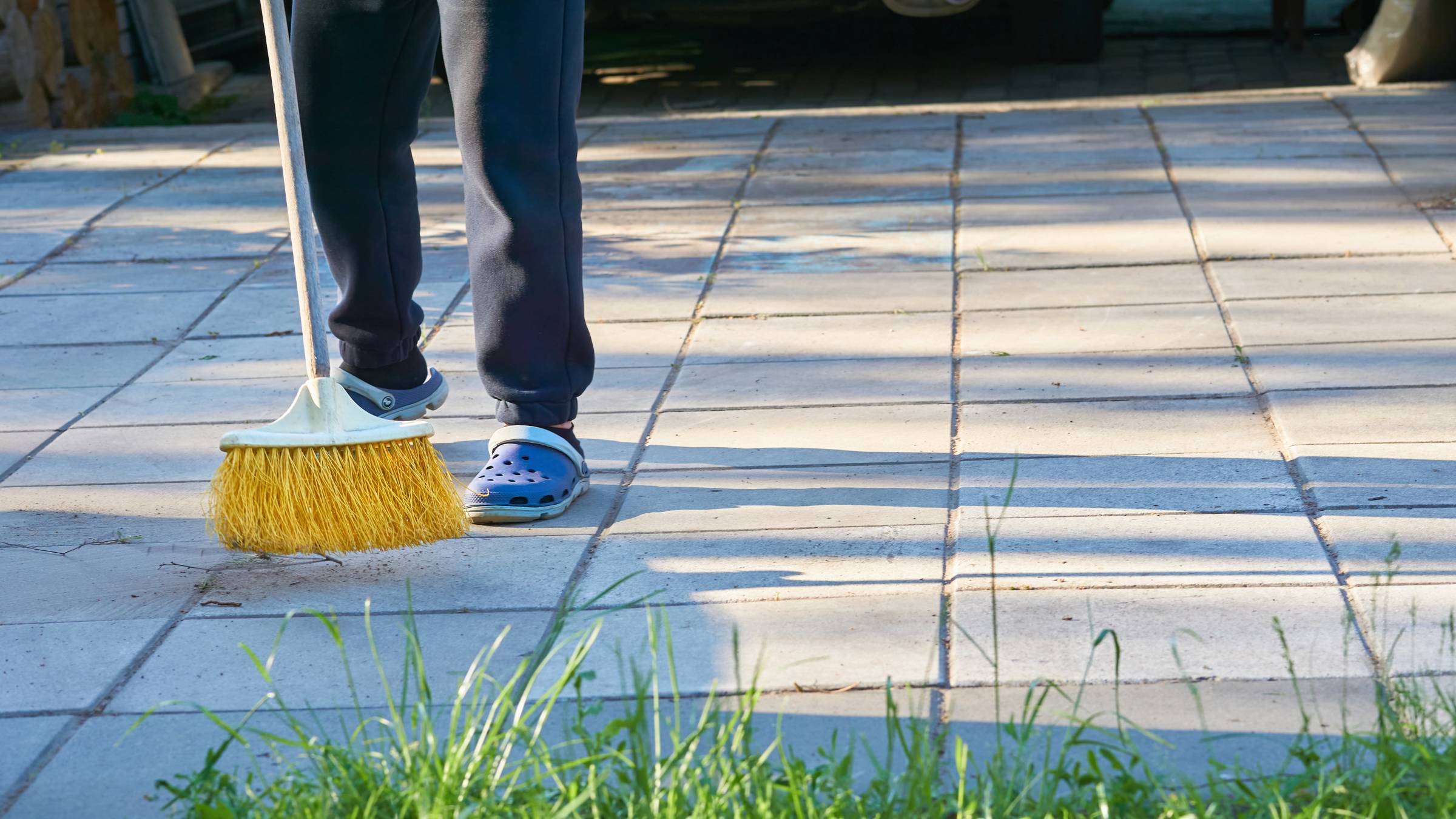
How much does patio cleaning cost?
Read more

